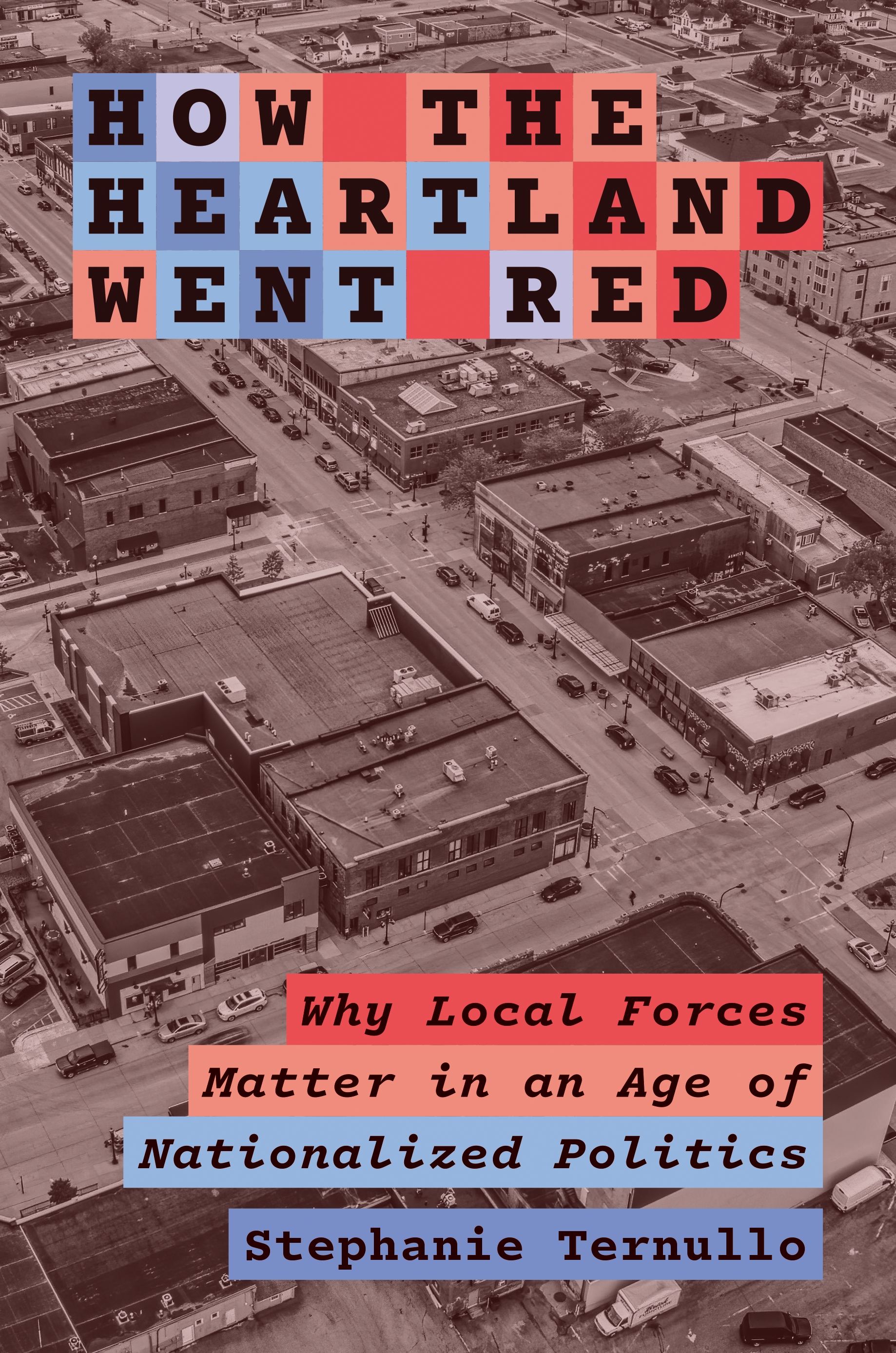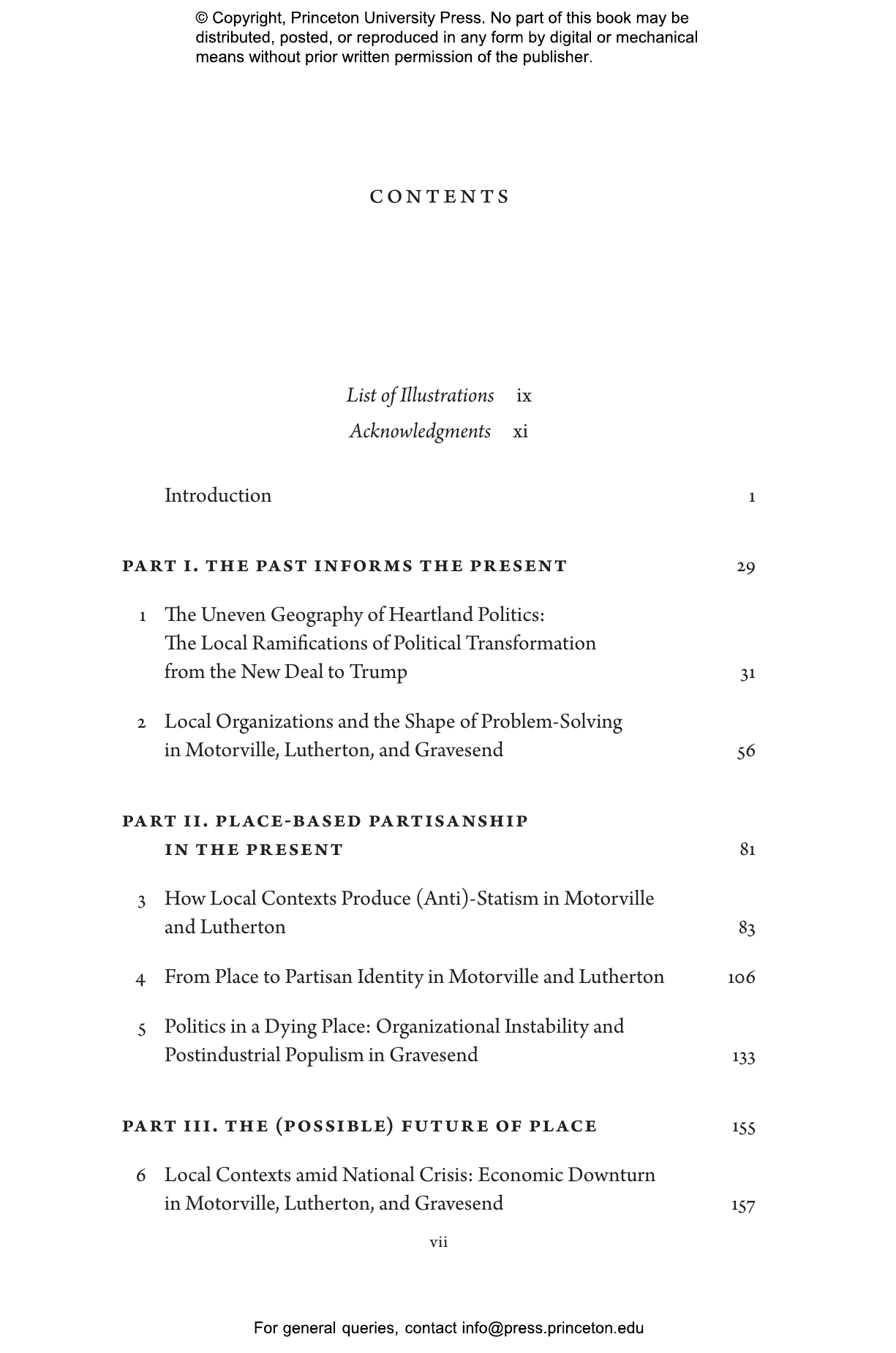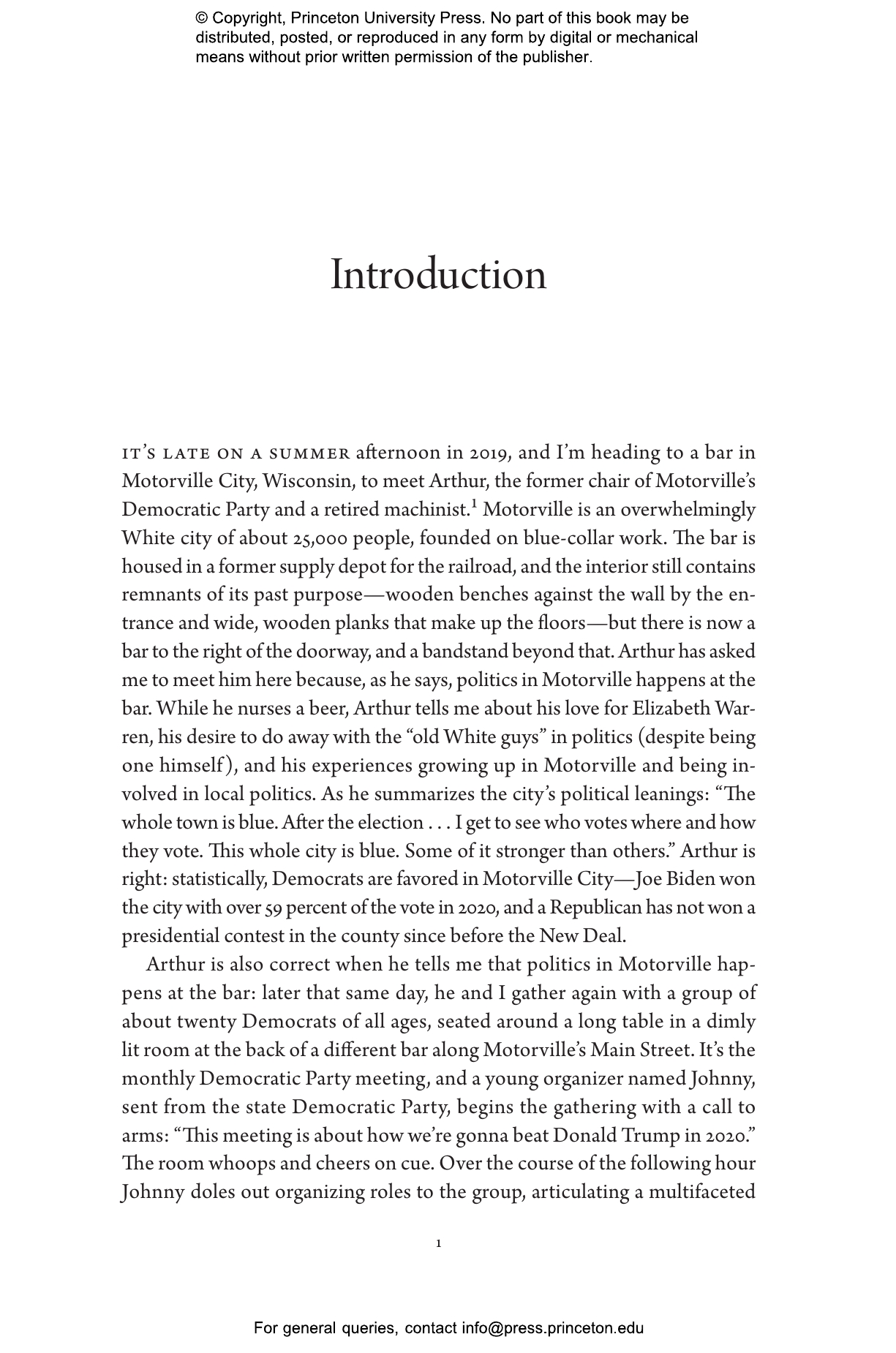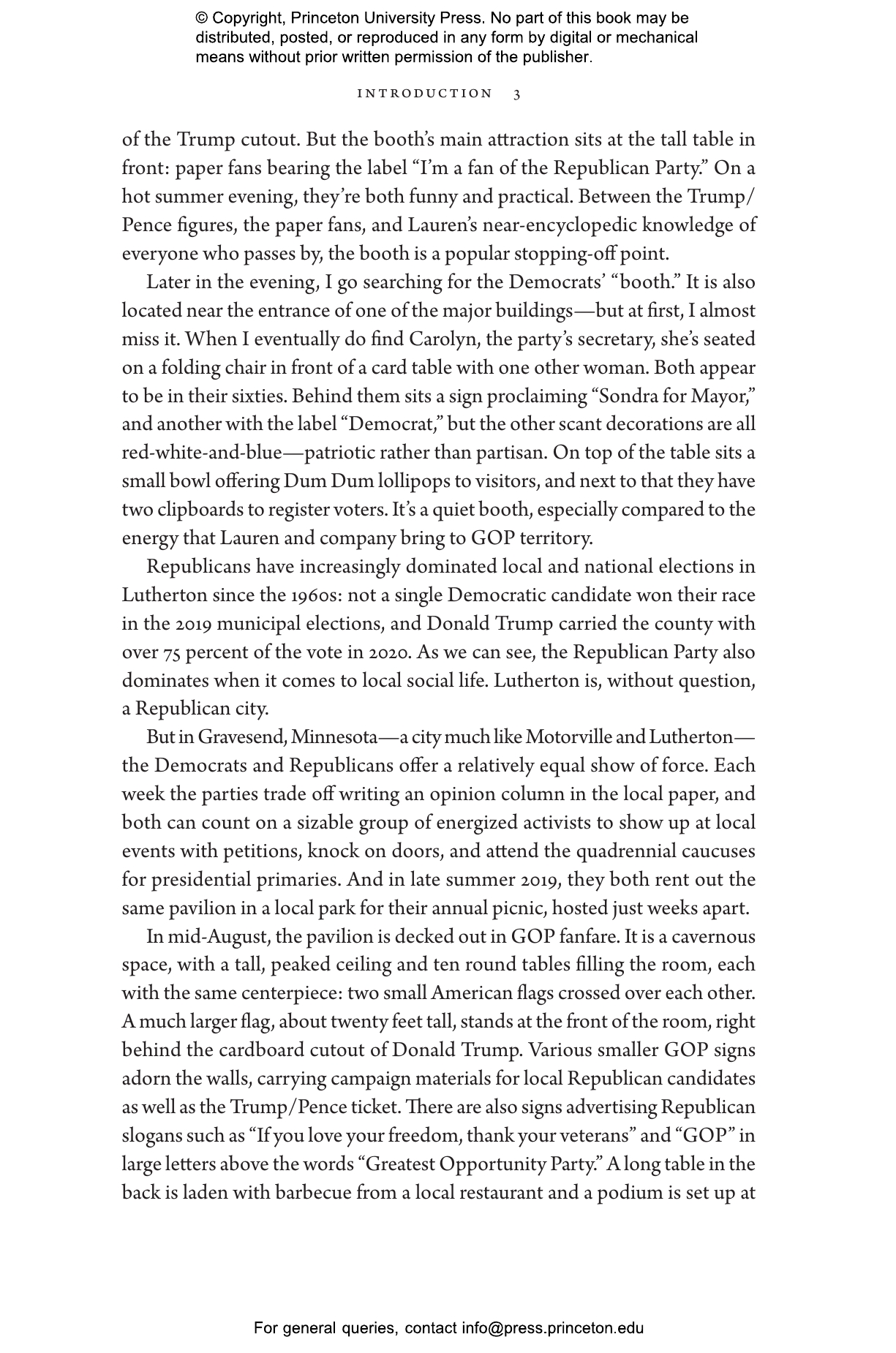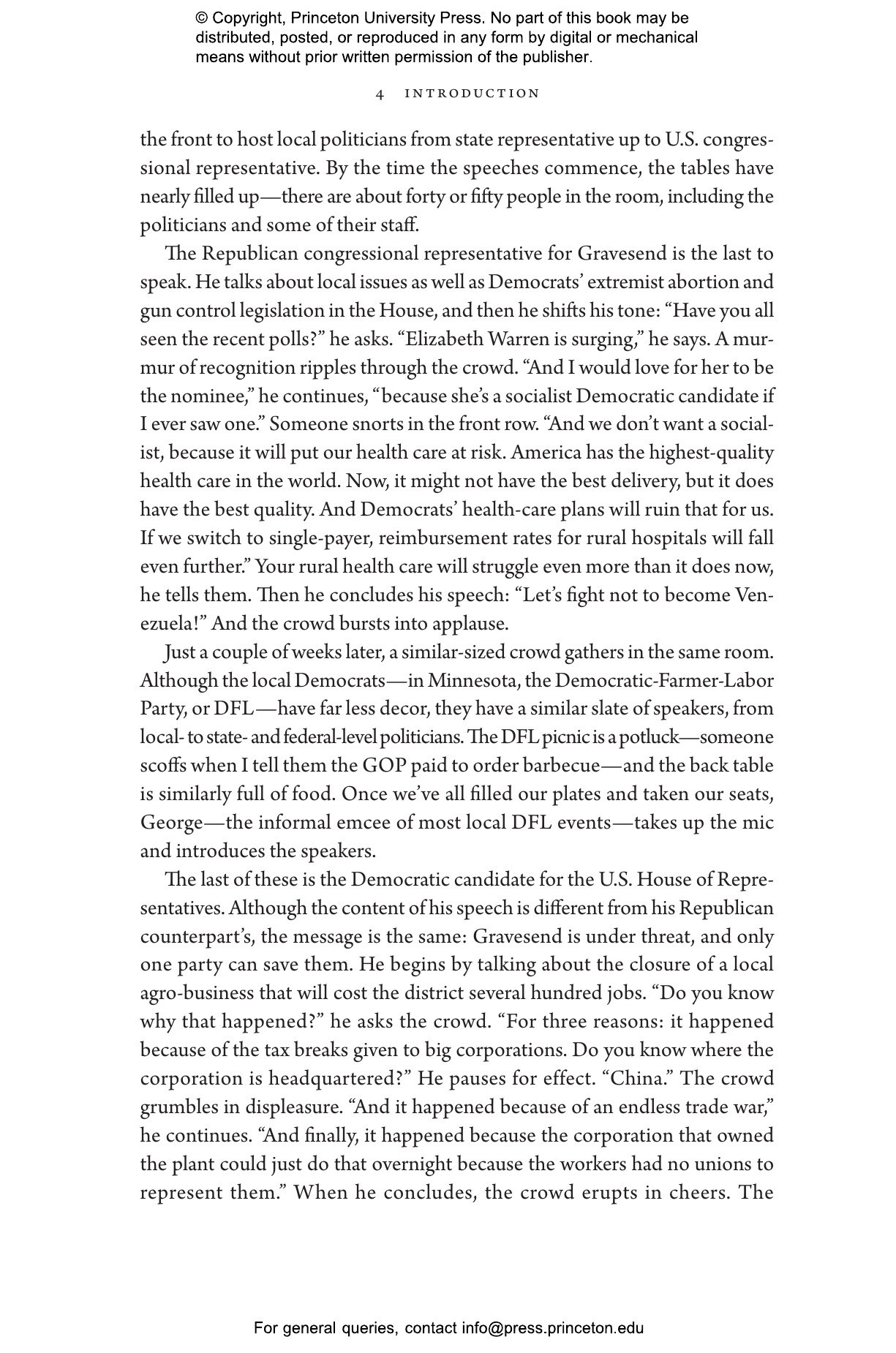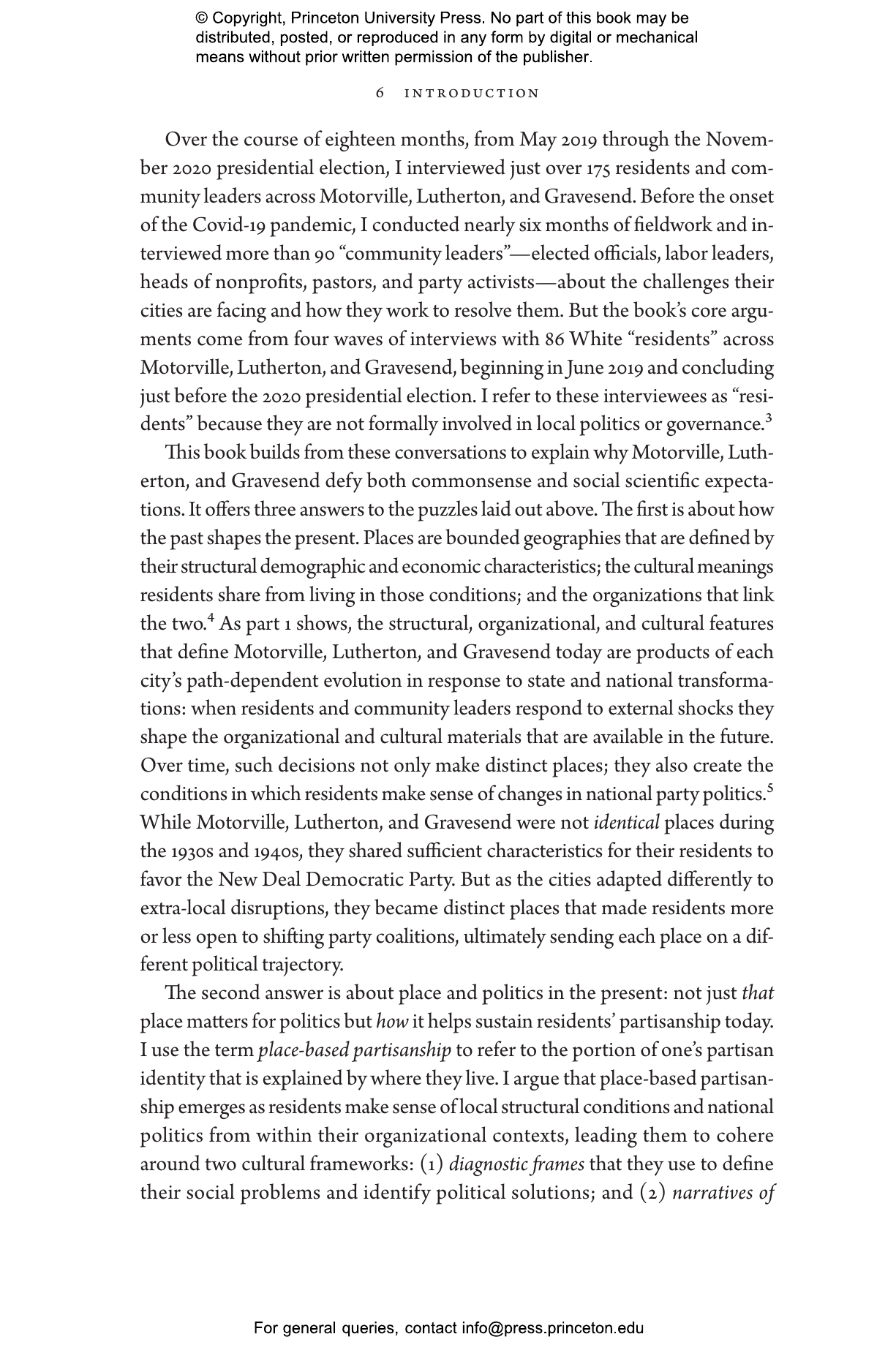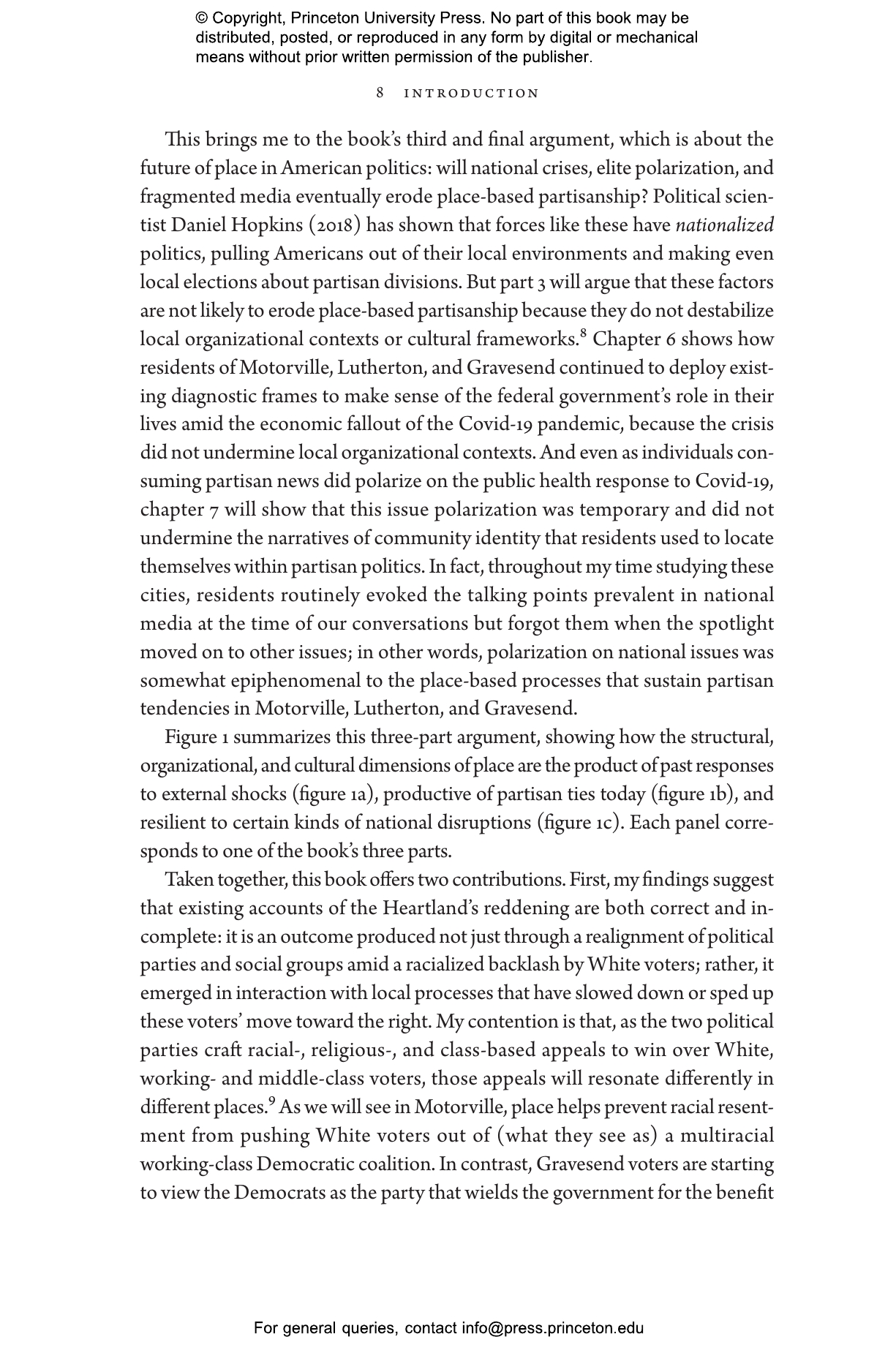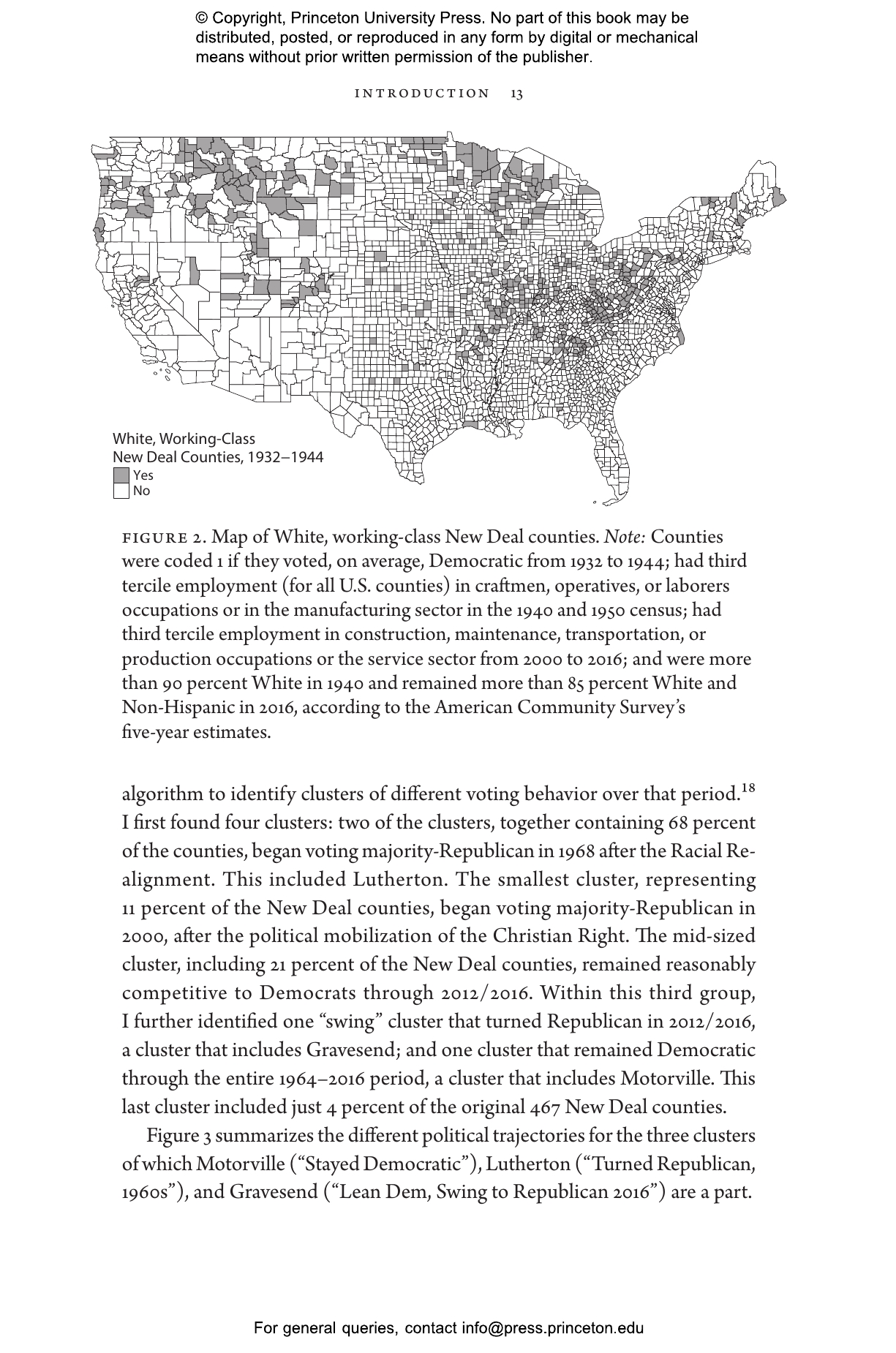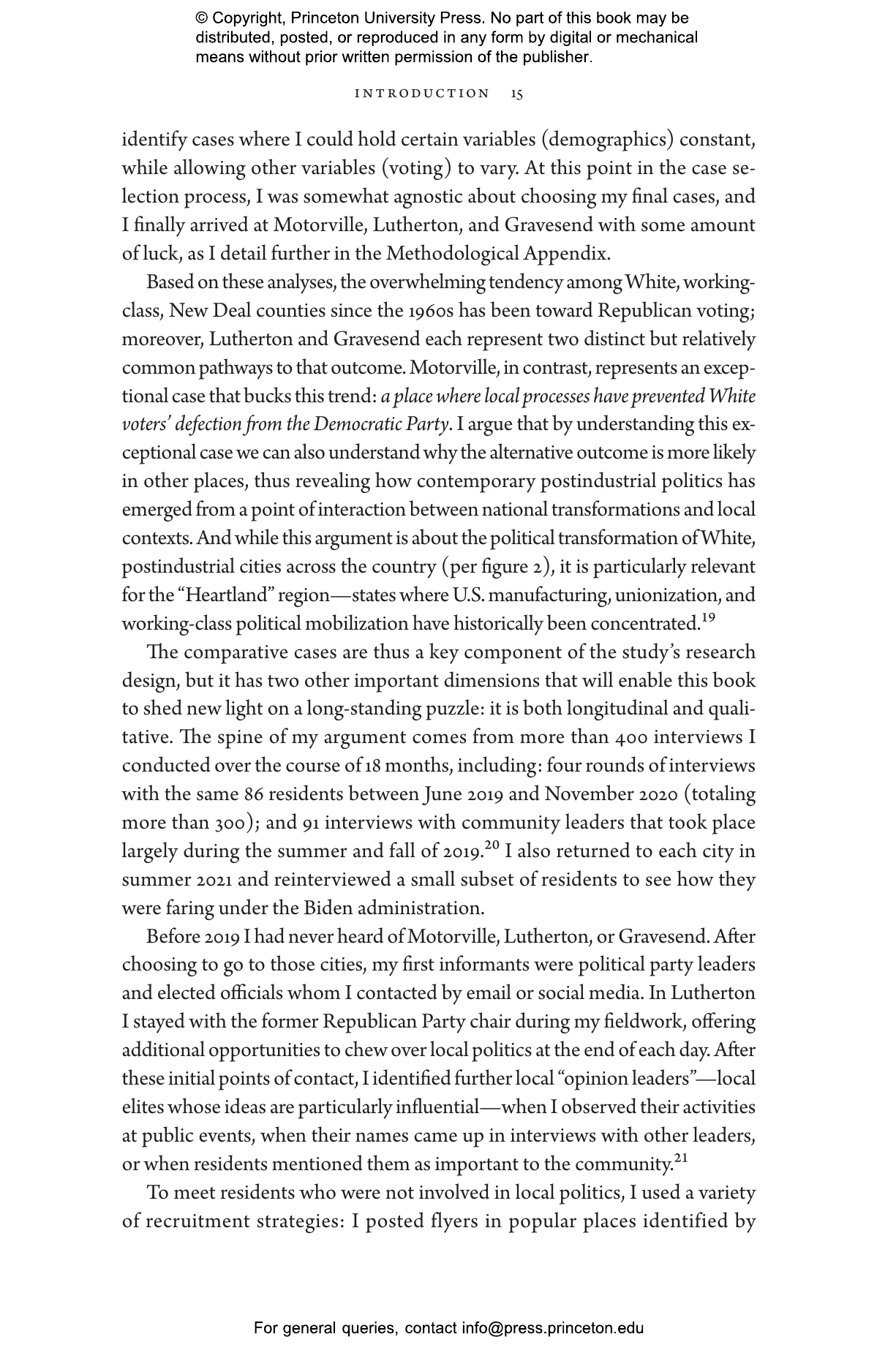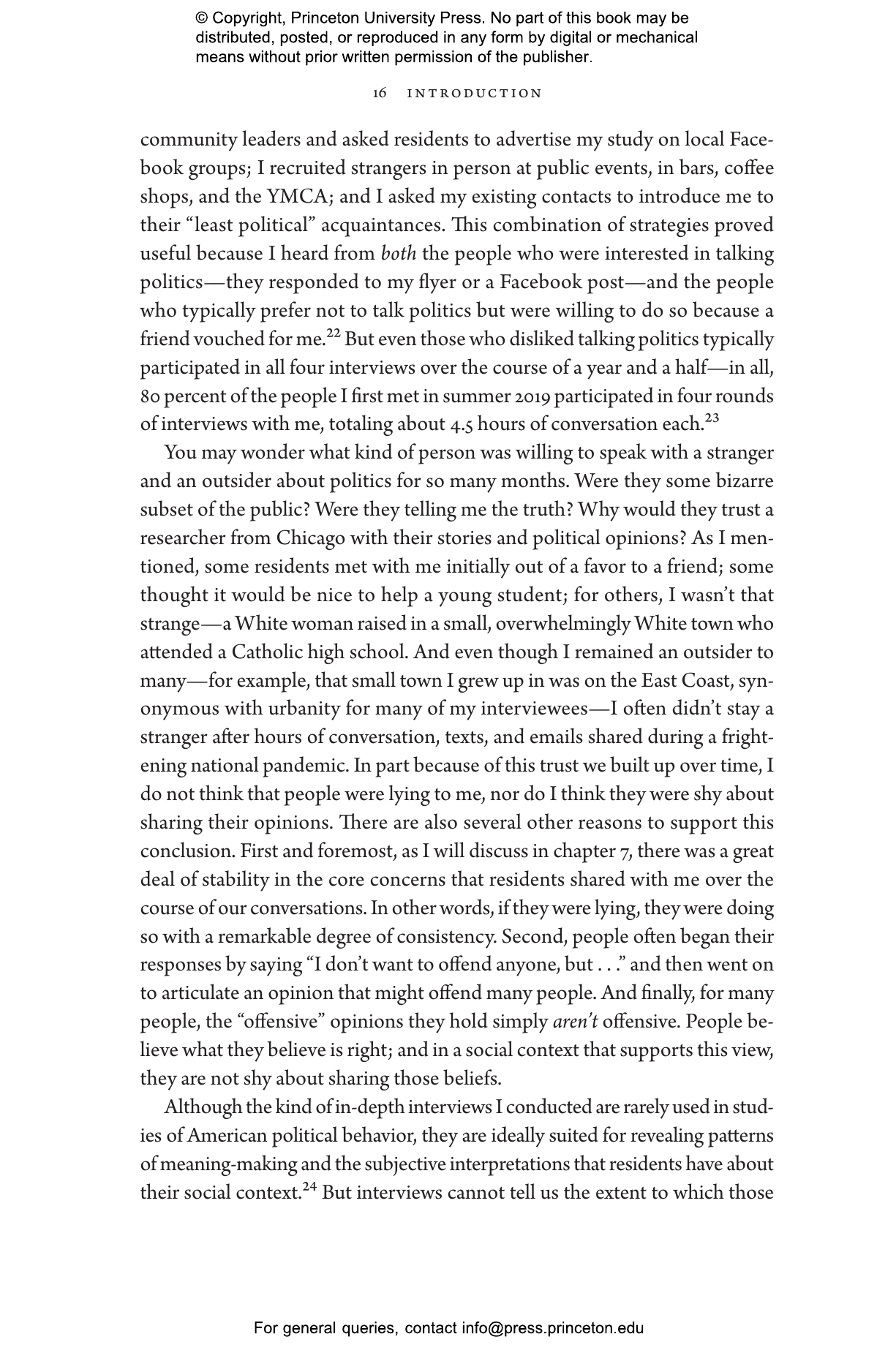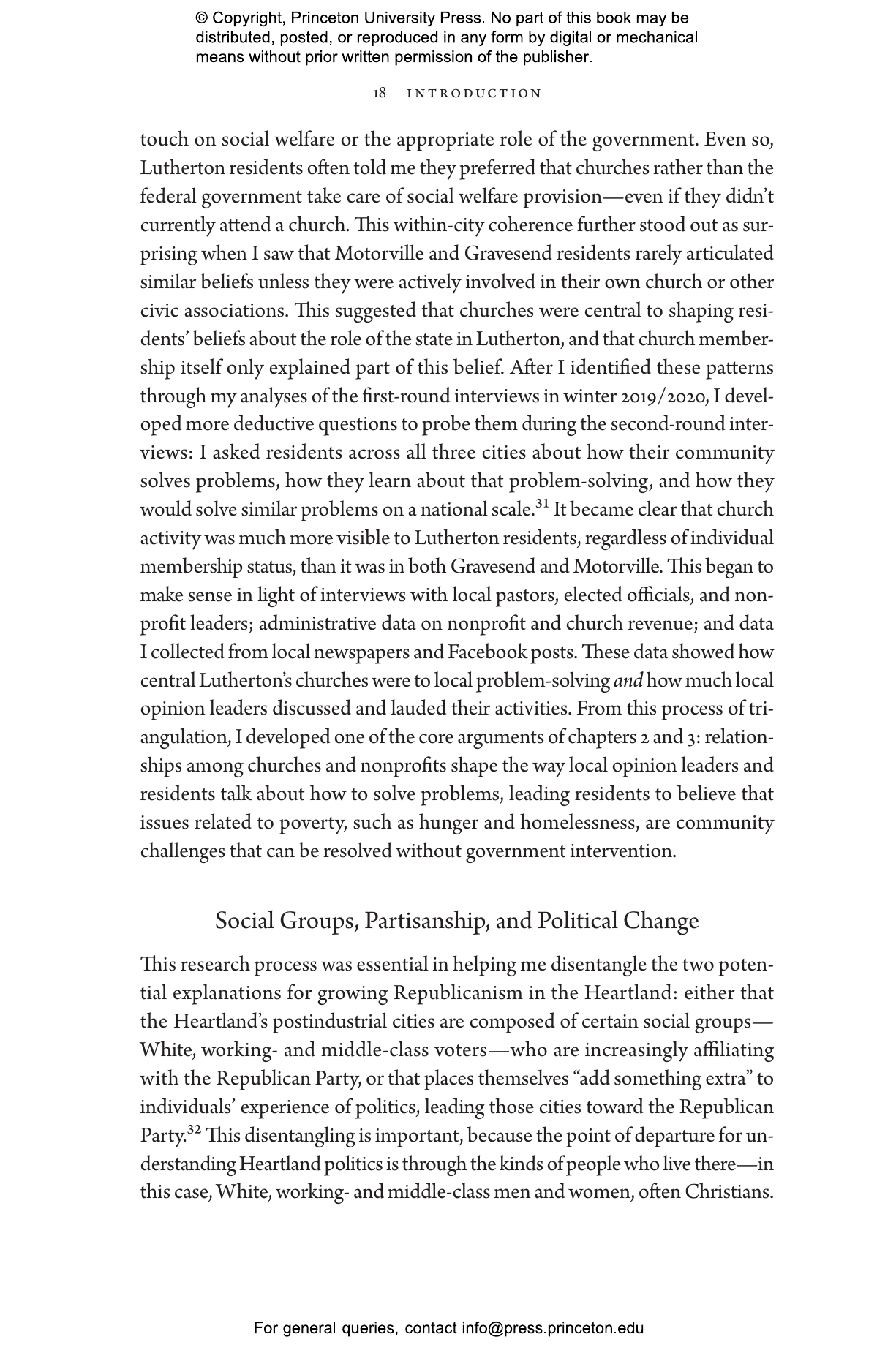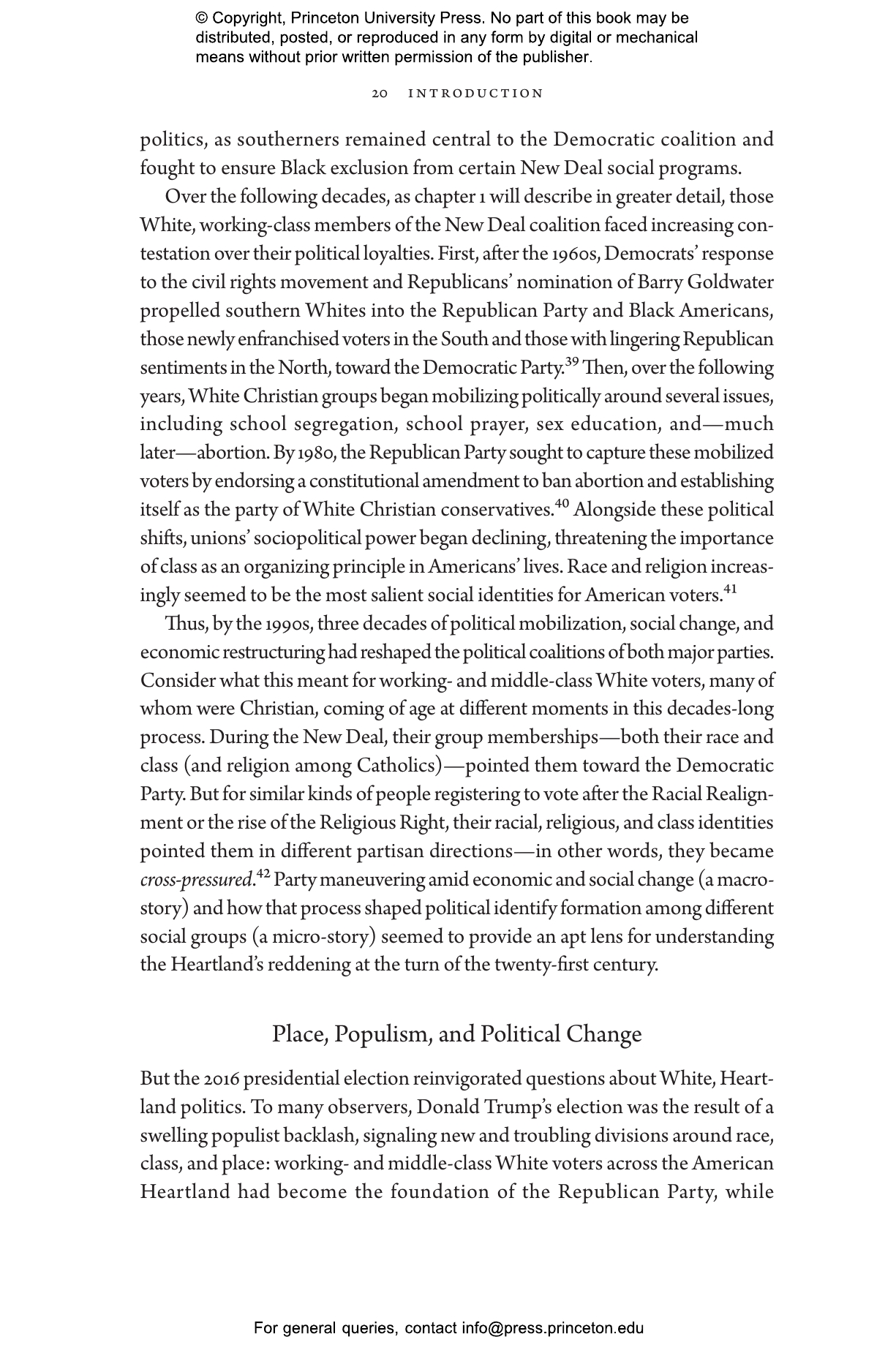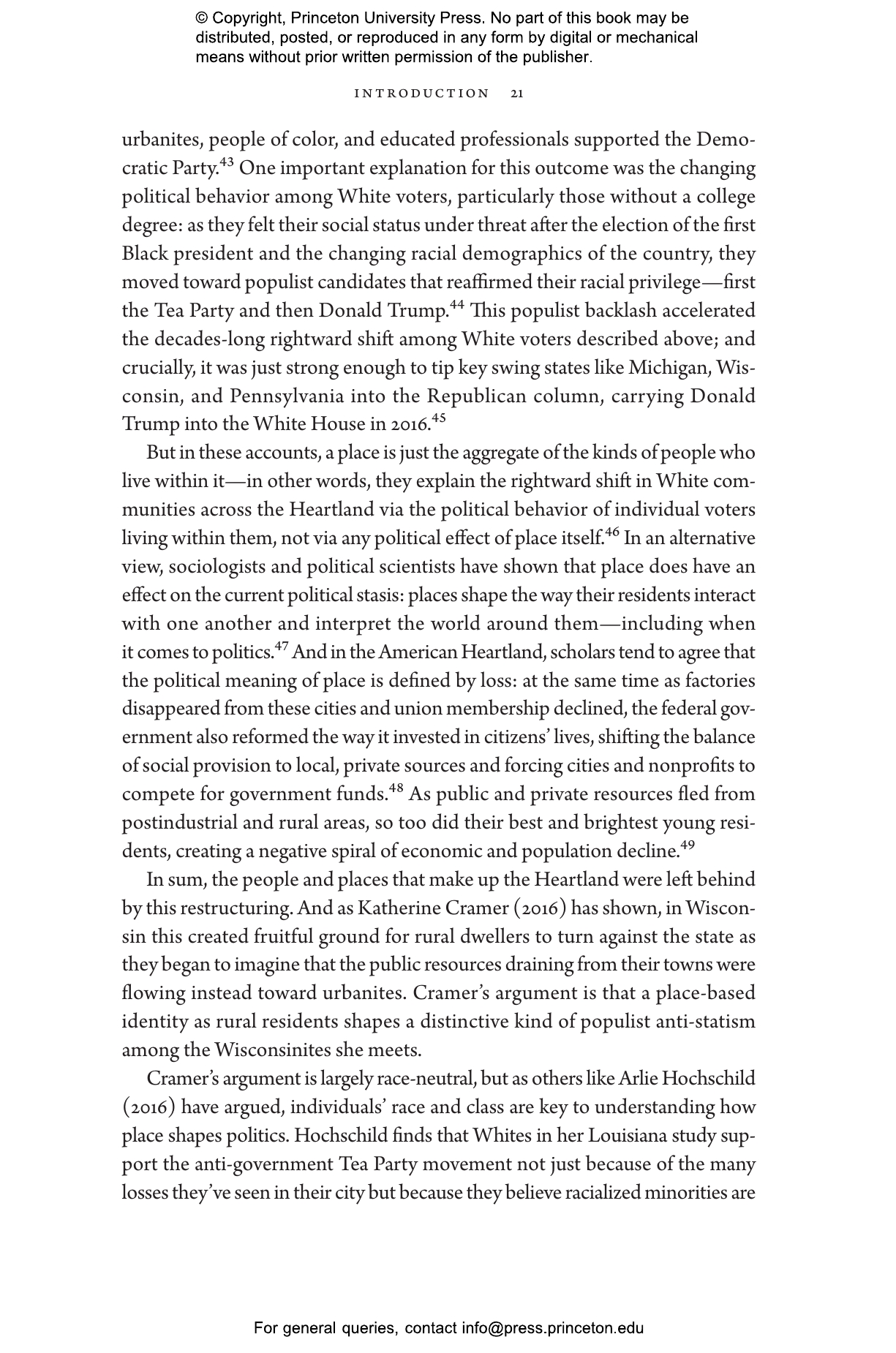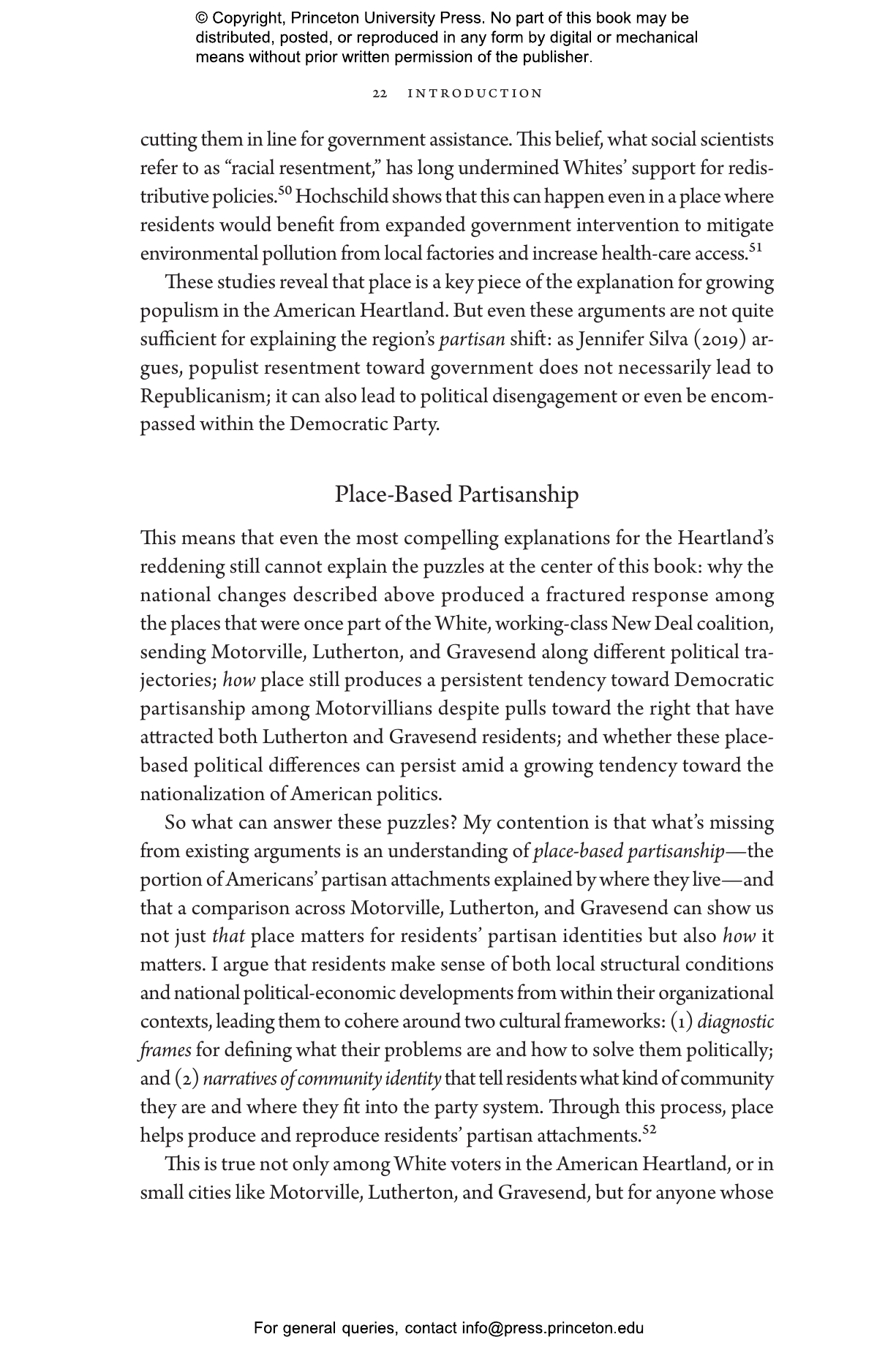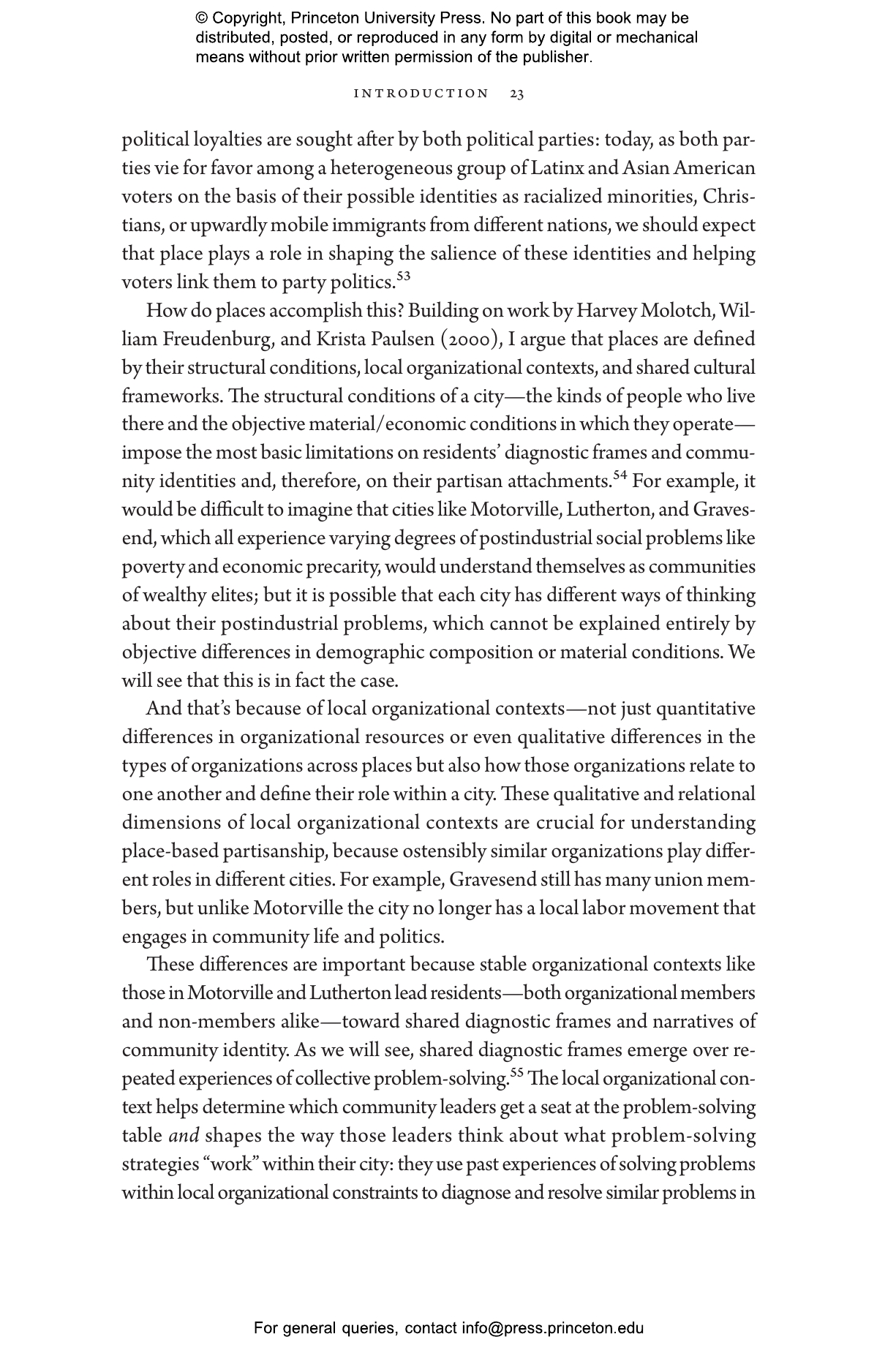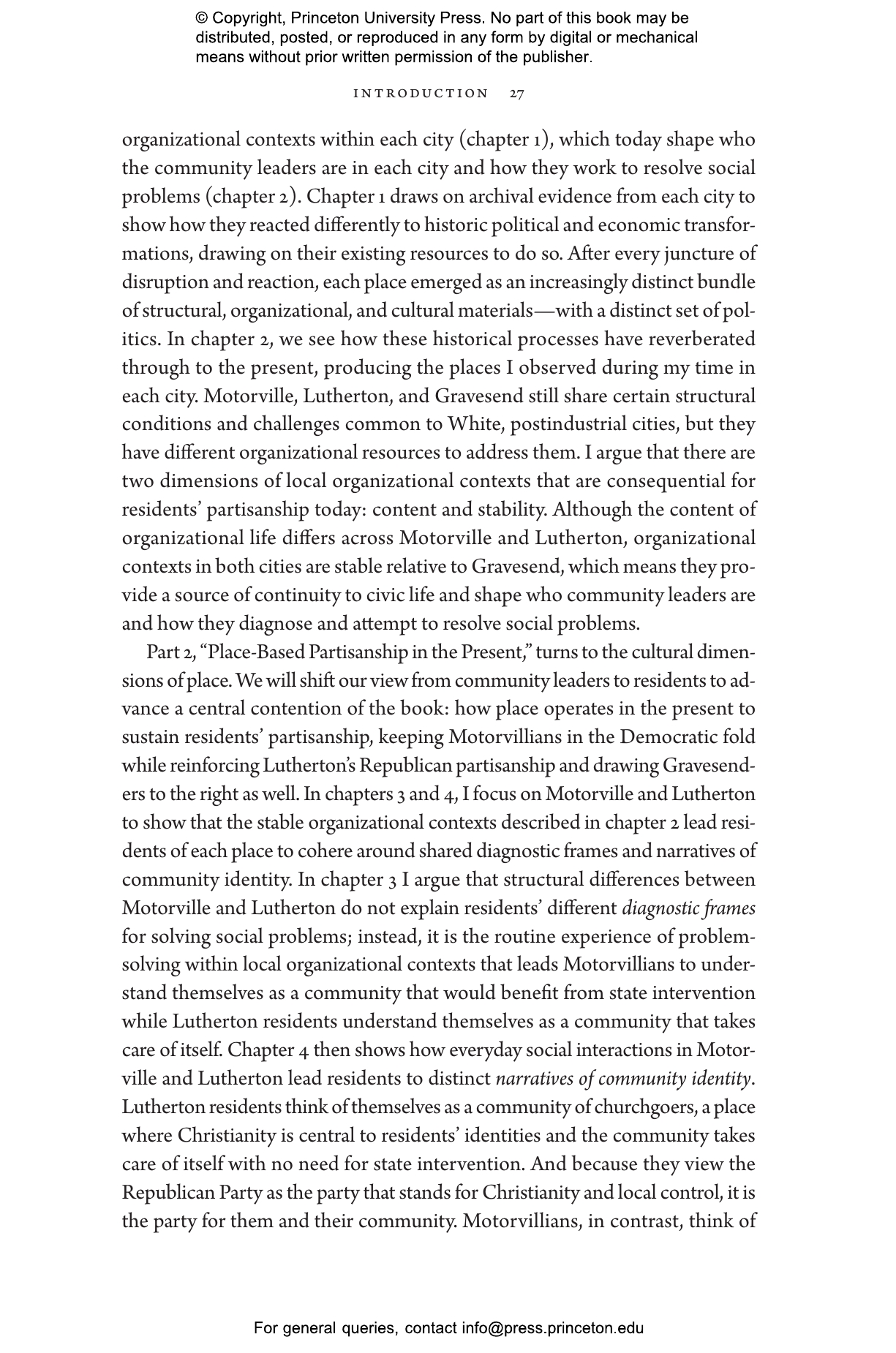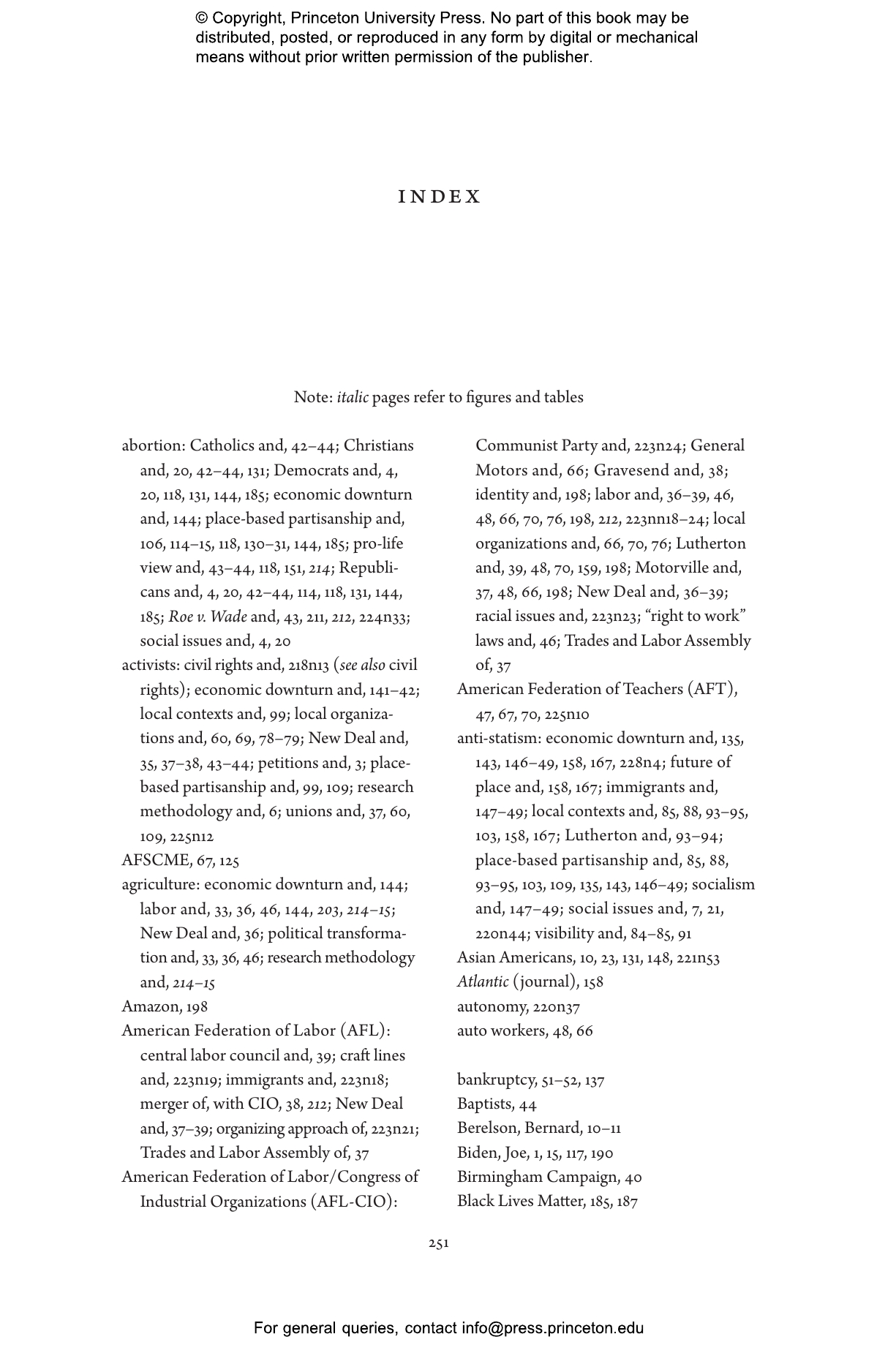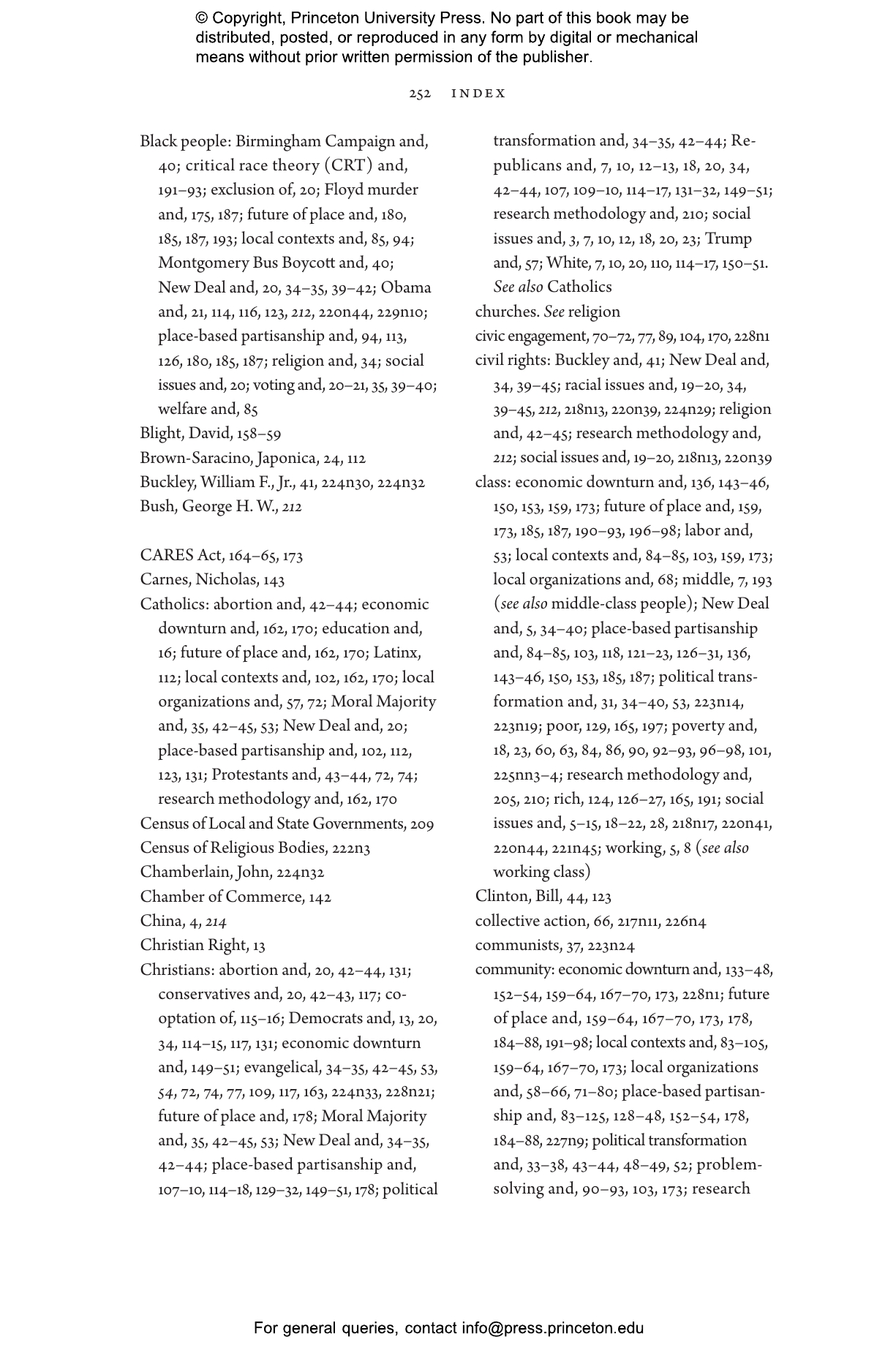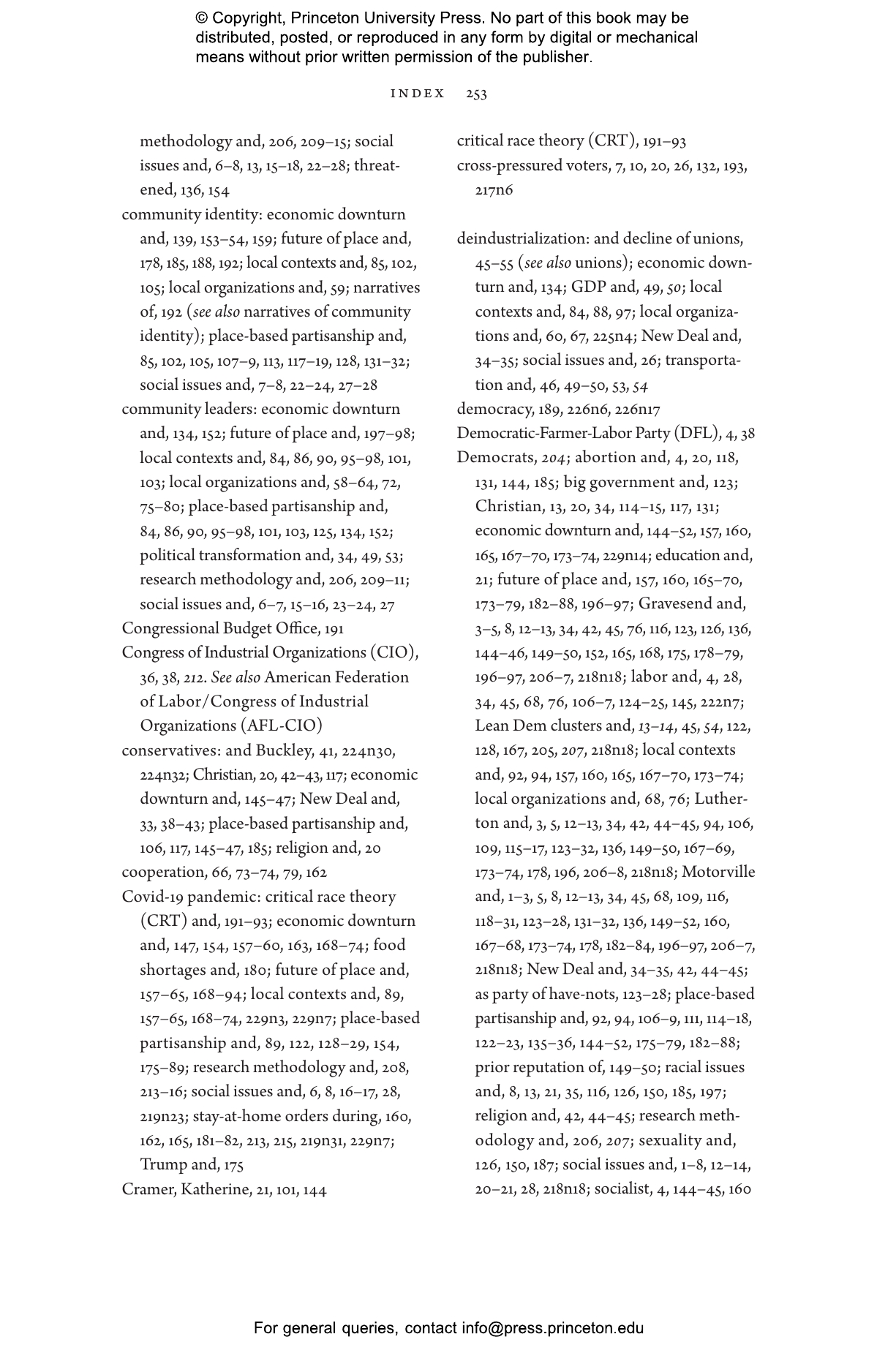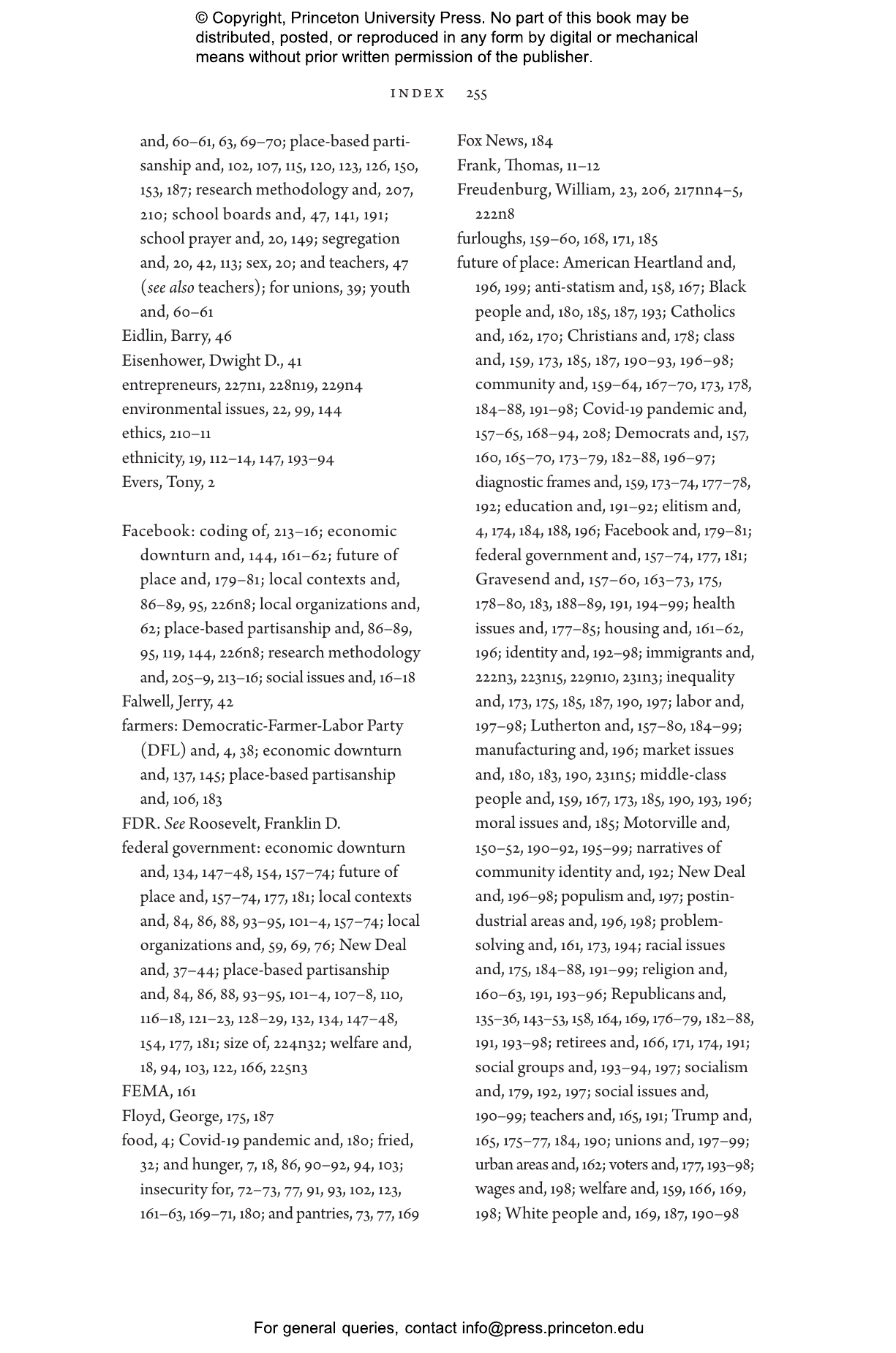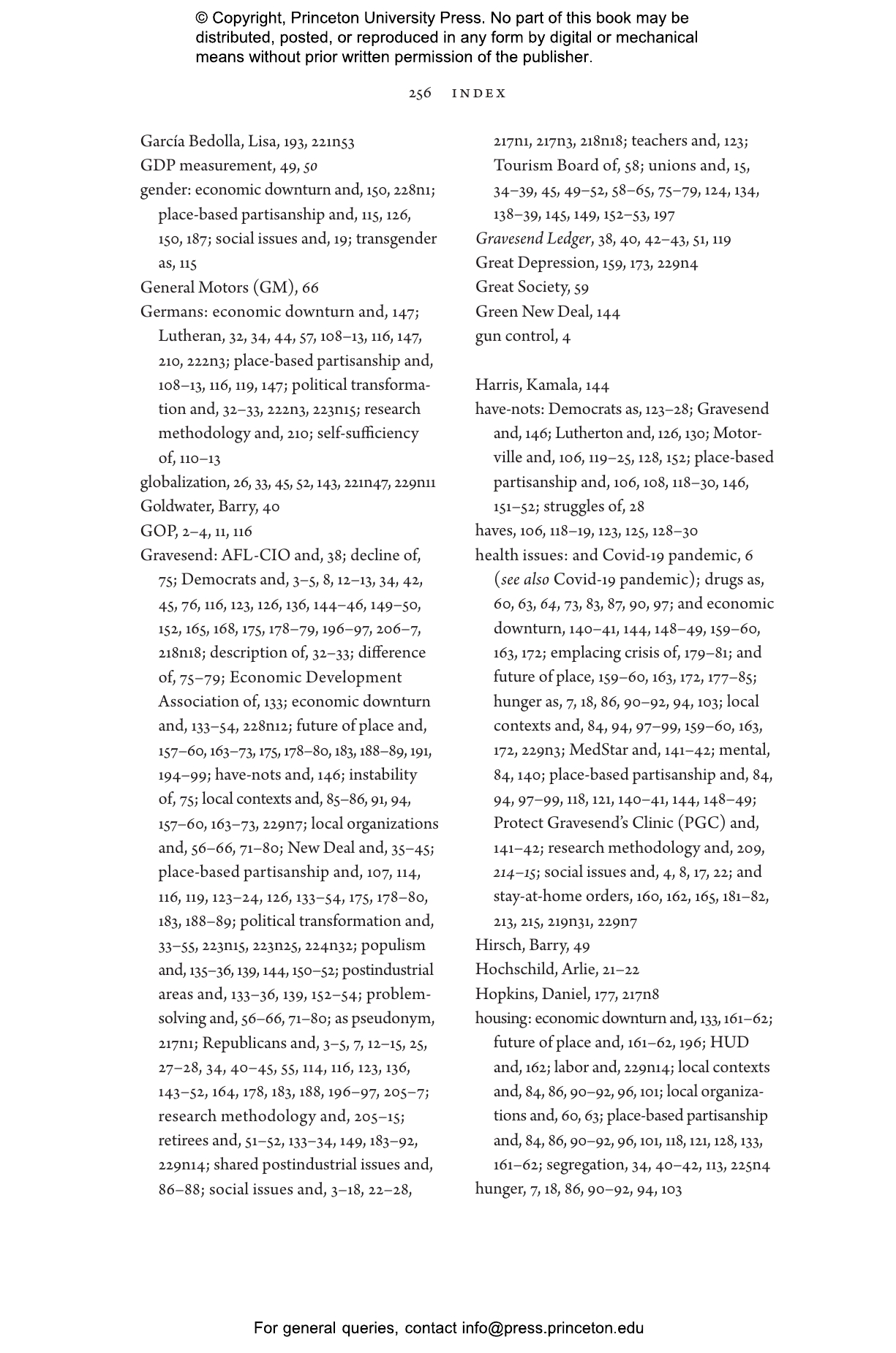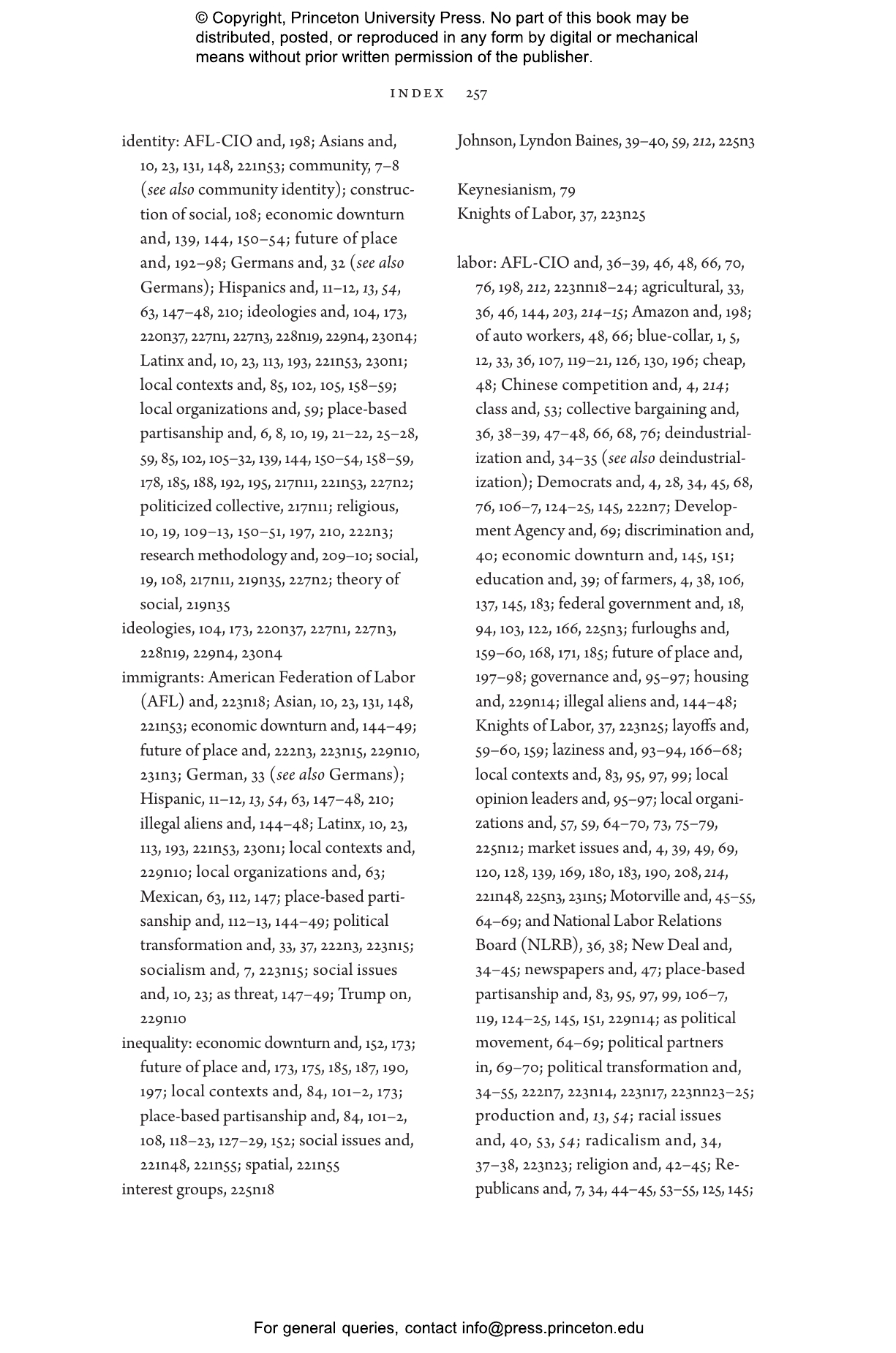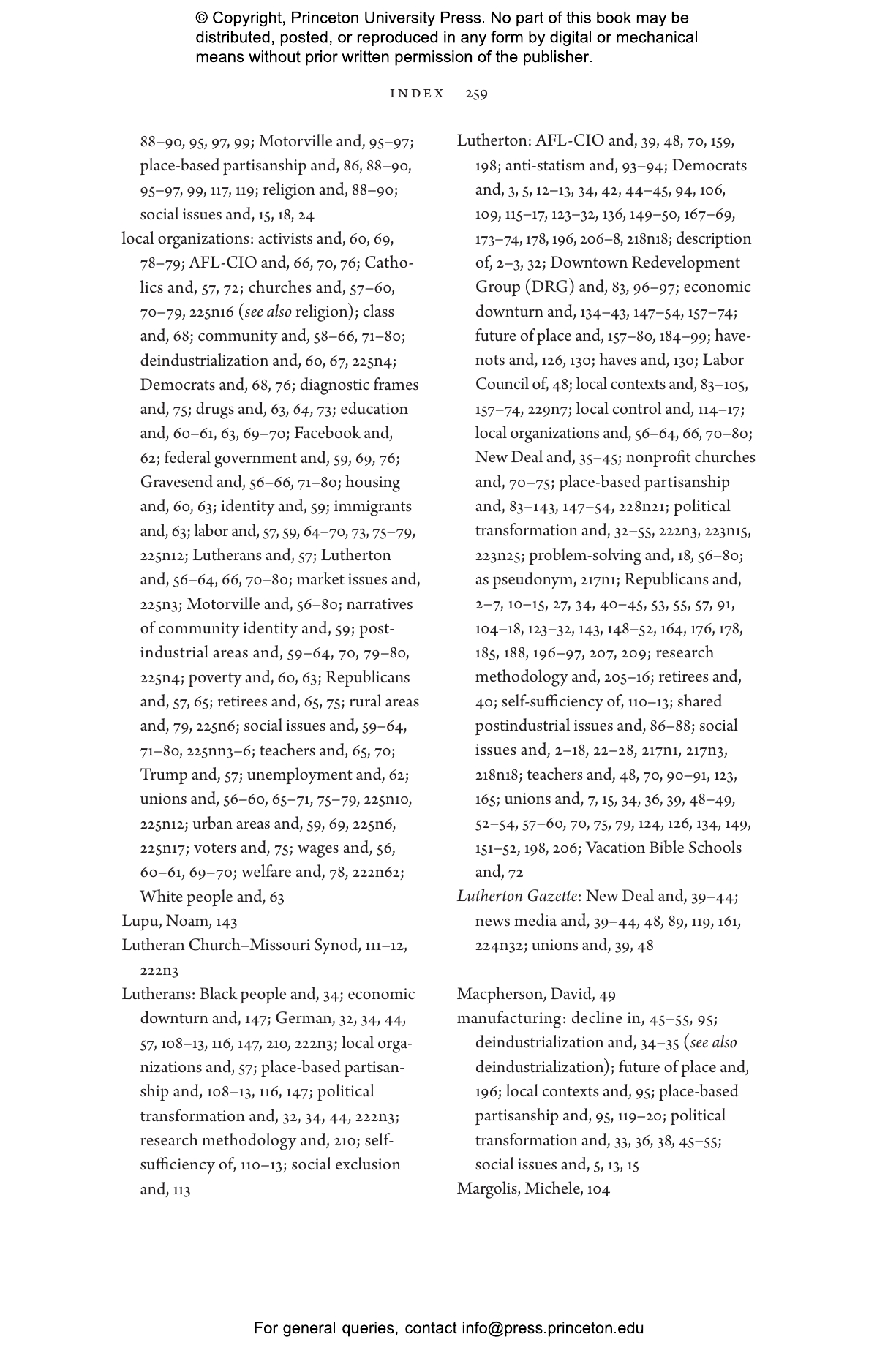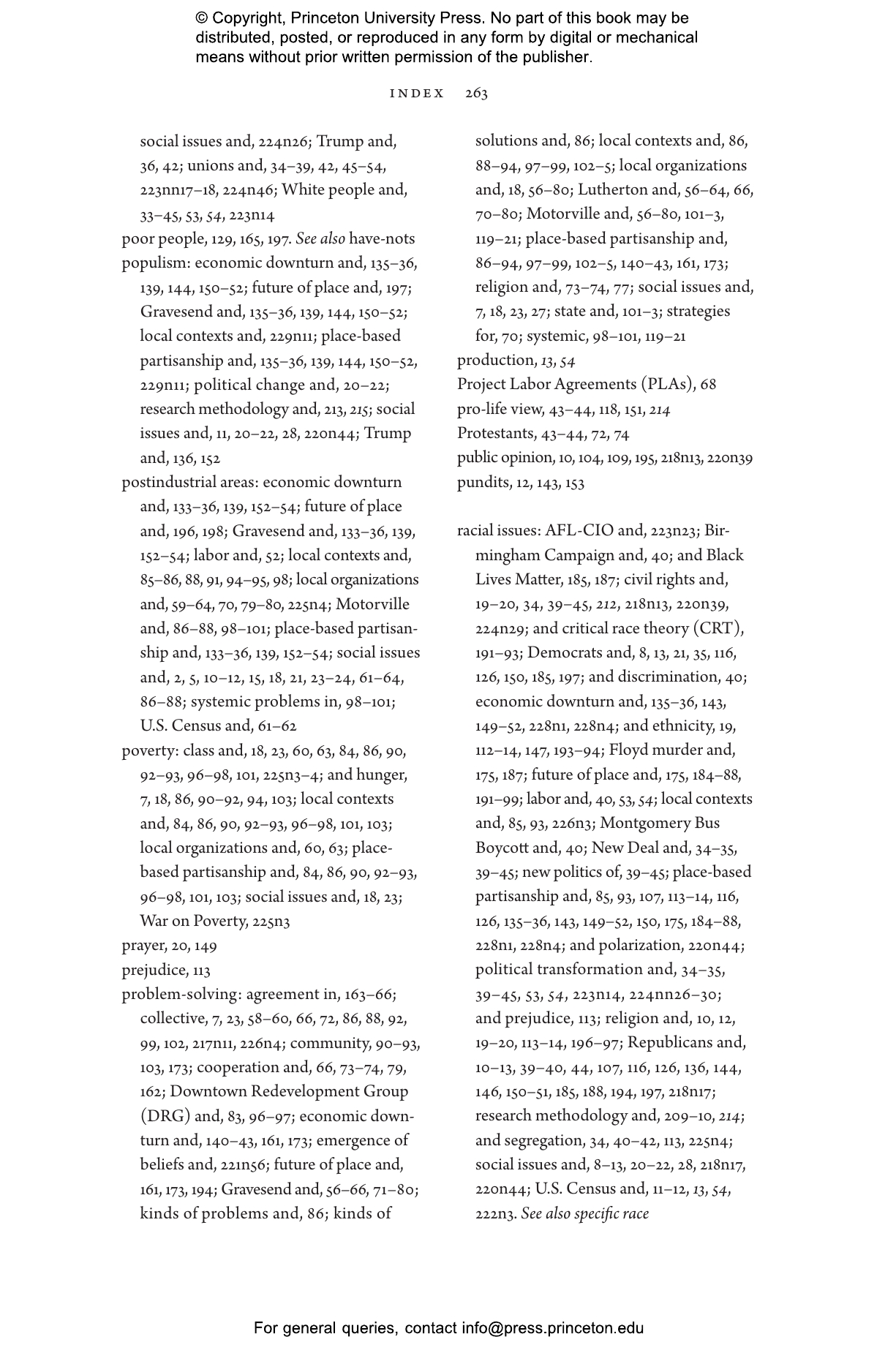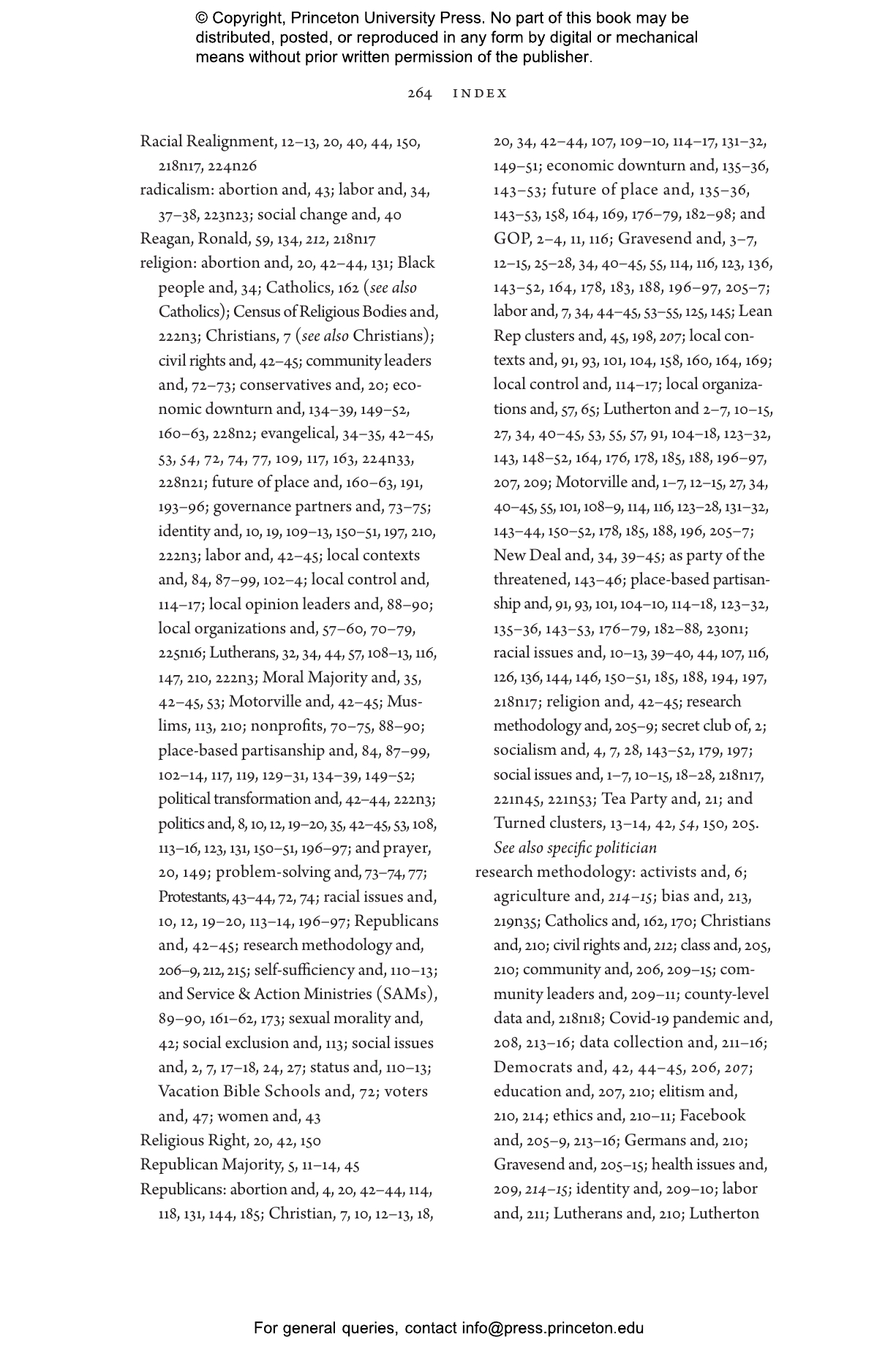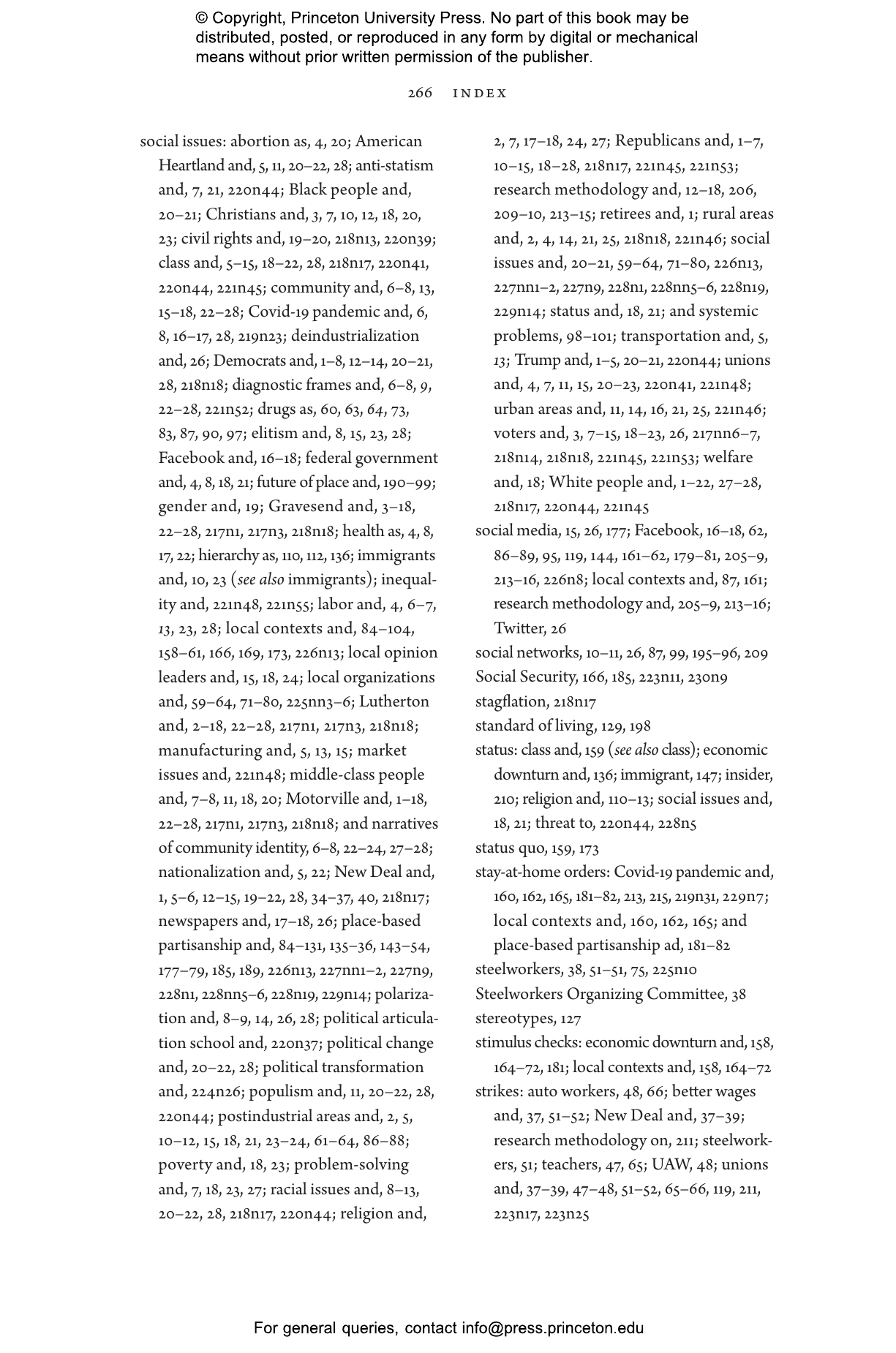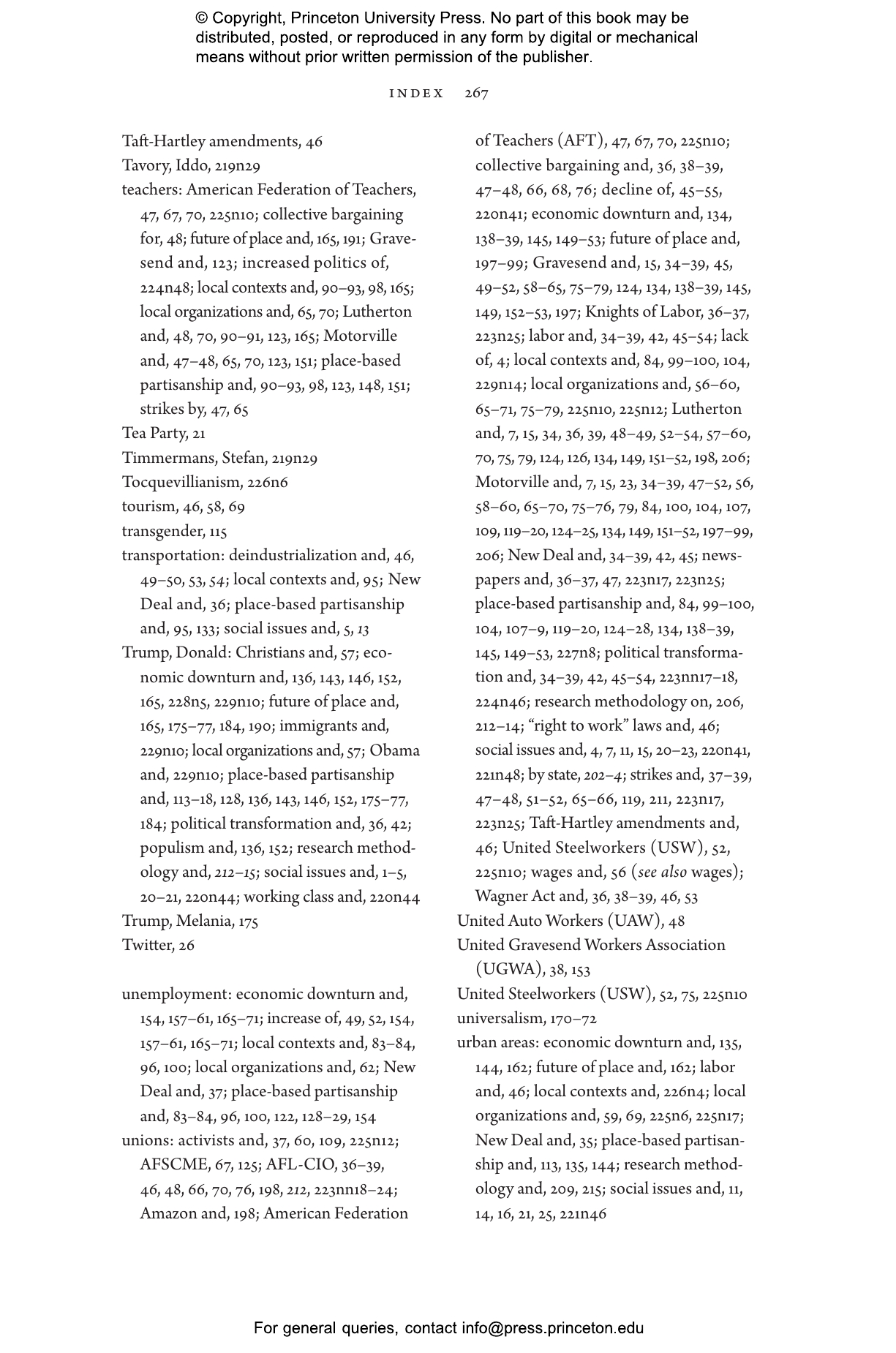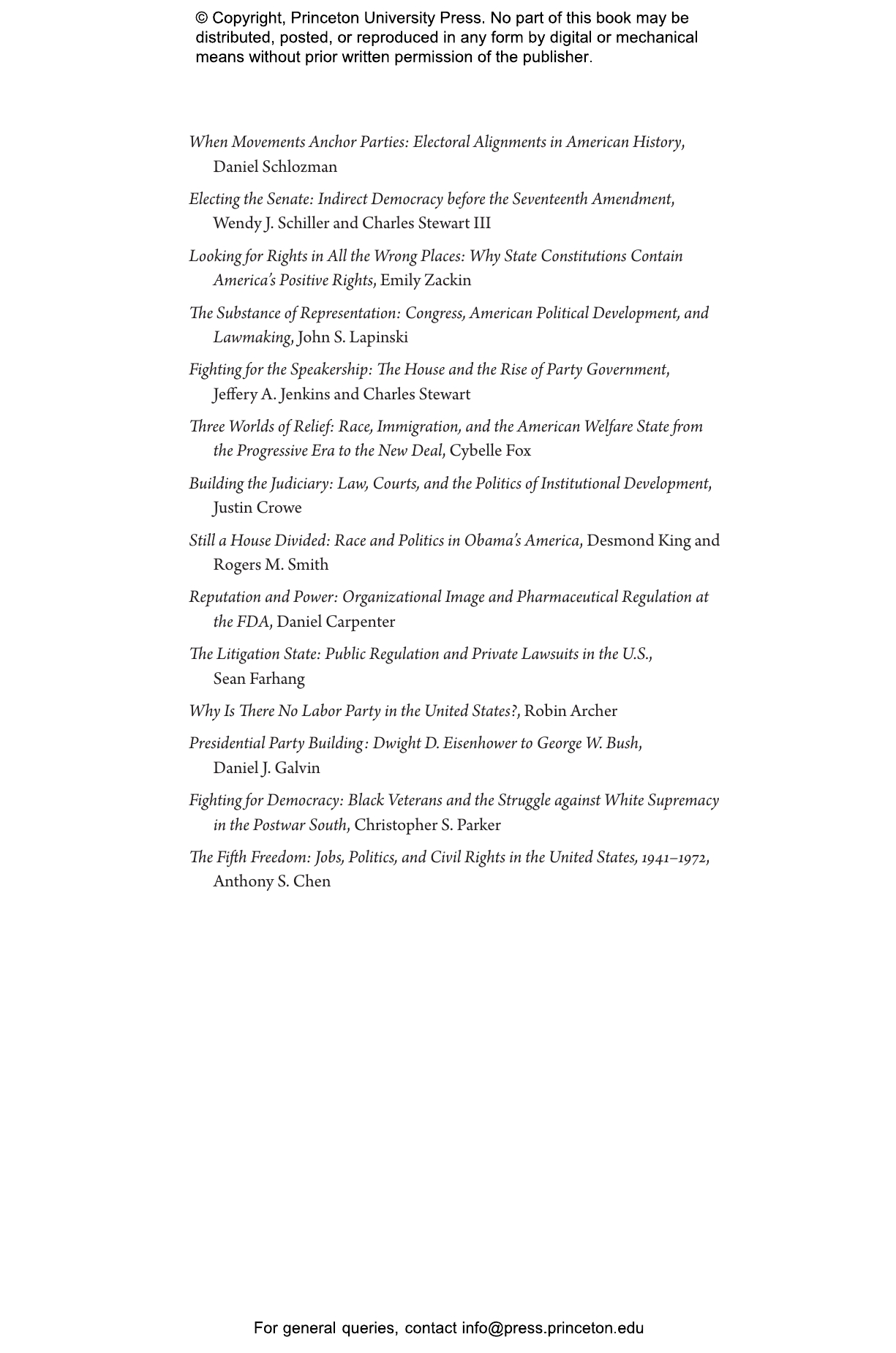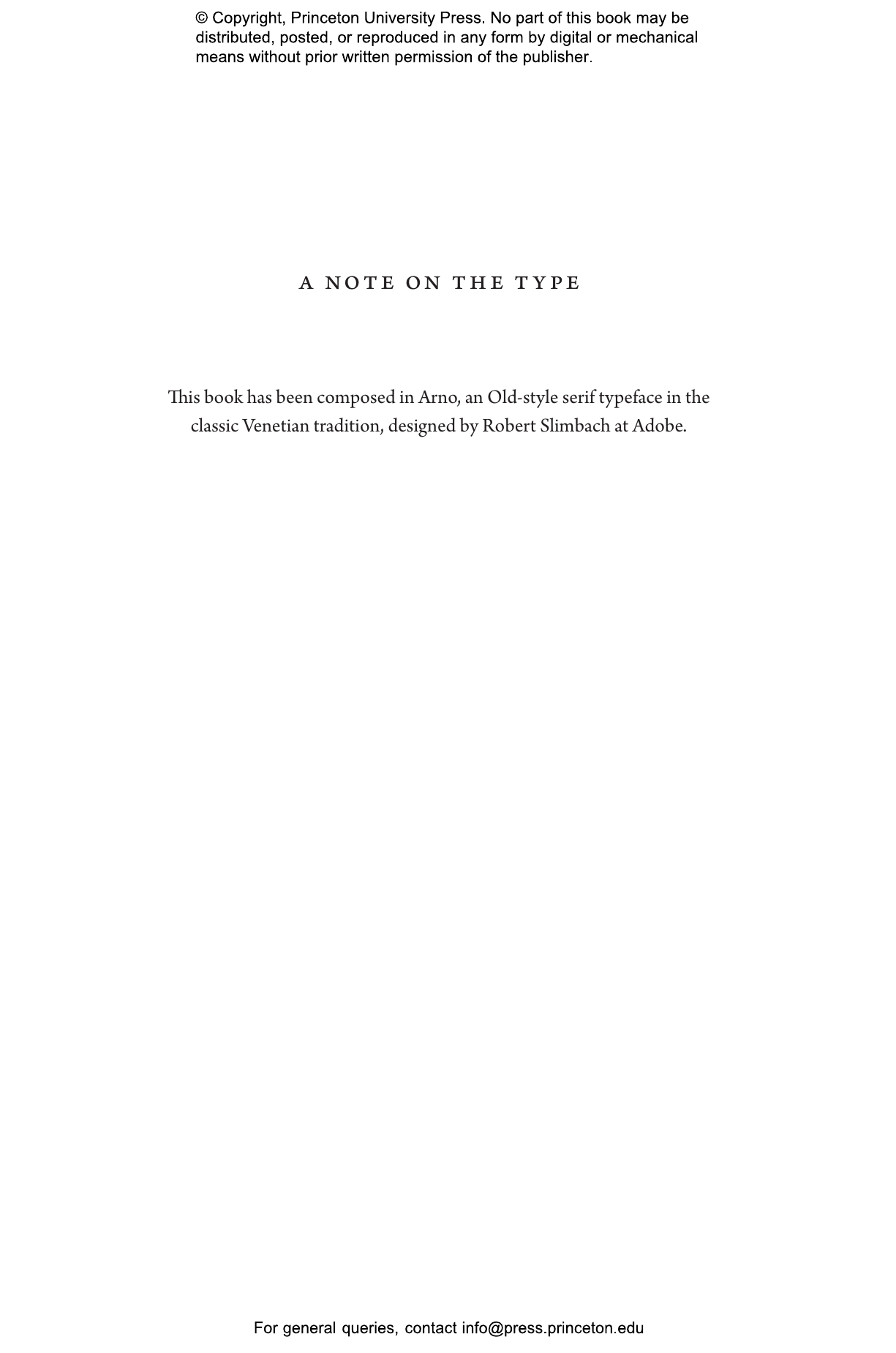Over the past several decades, predominantly White, postindustrial cities in America’s agriculture and manufacturing center have flipped from blue to red. Cities that were once part of the traditional Democratic New Deal coalition began to vote Republican, providing crucial support for the electoral victories of Republican presidents from Reagan to Trump. In How the Heartland Went Red, Stephanie Ternullo argues for the importance of place in understanding this rightward shift, showing how voters in these small Midwestern cities view national politics—whether Republican appeals to racial and religious identities or Democrat’s appeals to class—through the lens of local conditions.
Offering a comparative study of three White blue-collar Midwestern cities in the run-up to the 2020 election, Ternullo shows the ways that local contexts have sped up or slowed down White voters’ shift to the right. One of these cities has voted overwhelmingly Republican for decades; one swung to the right in 2016 but remains closely divided between Republicans and Democrats; and one, defying current trends, remains reliably Democratic. Through extensive interviews, Ternullo traces the structural and organizational dimensions of place that frame residents’ perceptions of political and economic developments. These place-based conditions—including the ways that local leaders define their cities’ challenges—help prioritize residents’ social identities, connecting them to one party over another. Despite elite polarization, fragmented media, and the nationalization of American politics, Ternullo argues, the importance of place persists—as one of many factors informing partisanship, but as a particularly important one among cross-pressured voters whose loyalties are contested.
Stephanie Ternullo is assistant professor of government at Harvard University.
"A powerful argument that economic, cultural, and political developments at the local level still matter a great deal. . . . [How the Heartland Went Red] deserves careful study from readers across the partisan divide. It provides useful insights into the politics of rural and small town America. It also raises important questions about what makes a healthy community, which still matters to most Americans, one hopes—even in an era dominated by nationalized partisan rancor."—George Hawley, City Journal
"A detailed look at the political realignment that has worked its way through American party politics since the 1960s. . . . [How the Heartland Went Red] is a rich presentation of quantitative and qualitative research into local politics. . . . Highly recommended."—J. D. Rausch, Choice
“By demonstrating the importance of local organizations in shaping partisan commitments, Ternullo’s original and timely book accomplishes what few other studies of Trump support have done: it illuminates the meso-level mechanisms that connect individual-level attitudes with macro-level political outcomes. In so doing, this carefully designed and expertly executed comparative study helps us understand how distinct placed-based identities lead otherwise similar towns along sharply divergent paths. Engagingly written and rigorously researched, this multicausal account is a must-read for anyone interested in the radicalization of contemporary democratic politics. It belongs in the canon of essential books on the Trump era—and American political change more broadly.”—Bart Bonikowski, New York University
“How the Heartland Went Red calls academics, politicians, policymakers, and others to grapple with the degree to which politics take novel shape in specific locales, and with how the contexts in which one is embedded can shape one’s politics. This book promises to change how all of us think and talk about the adoption of partisan attachments.”—Japonica Brown-Saracino, Boston University
“This book is a good reminder that what it means to be a Republican or a Democrat is something that people figure out through interaction with each other, in particular places. Ternullo’s sociological approach is invaluable. Her intensive fieldwork and careful theorizing illuminate the complex ways that structure and culture shape communities’ and individuals’ attempts to make sense of their place in the world and their choices about public affairs. The result is a valuable deepening of the conversation around the contemporary link between place and partisanship.”—Katherine Cramer, University of Wisconsin–Madison


